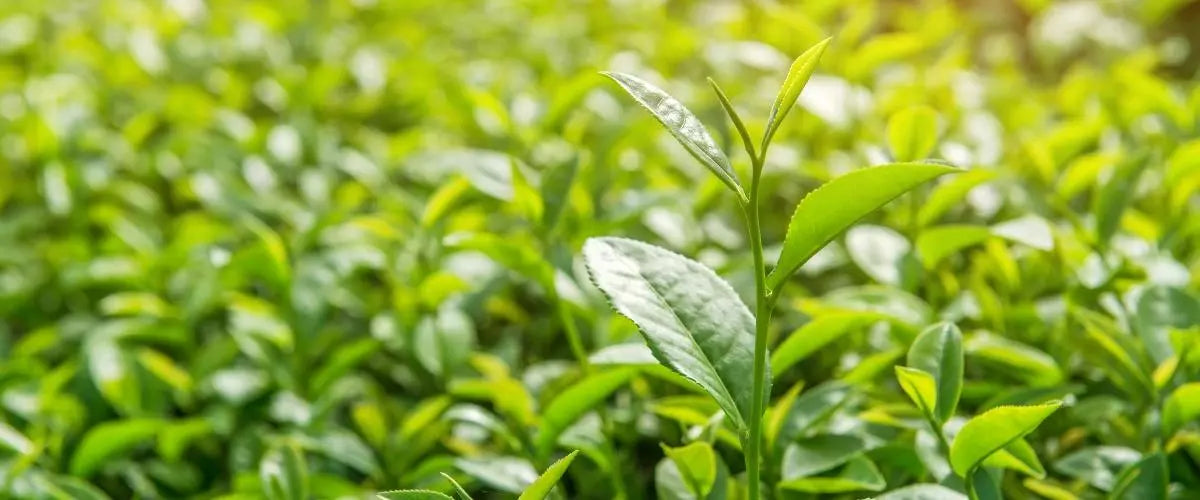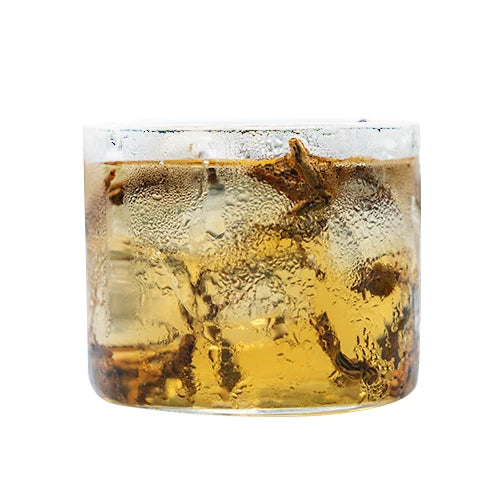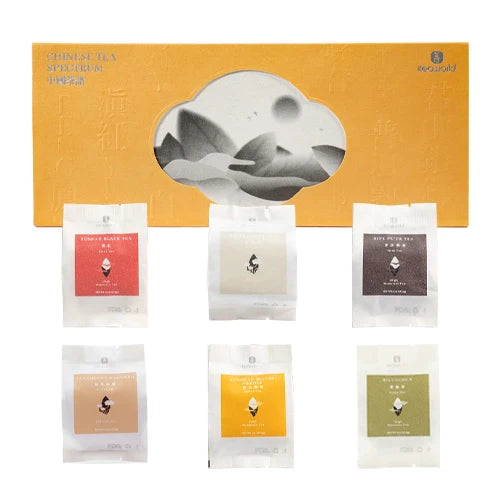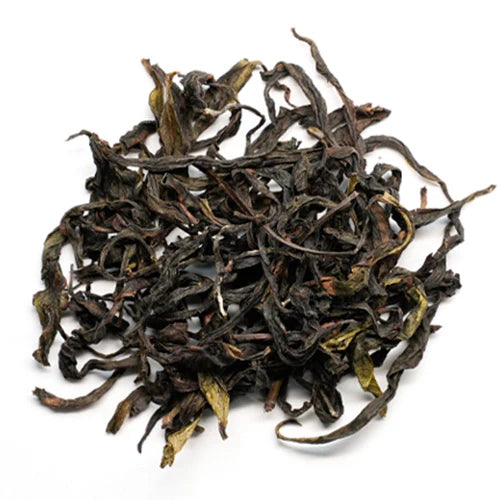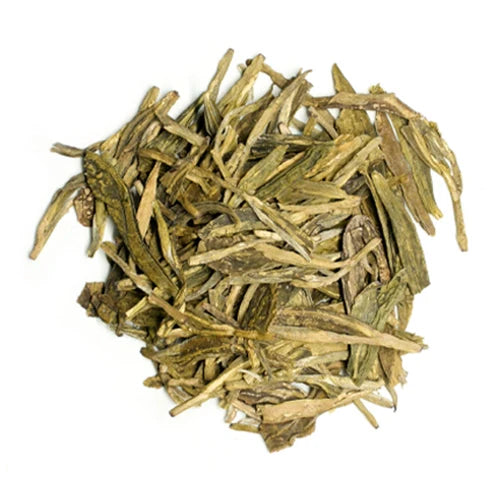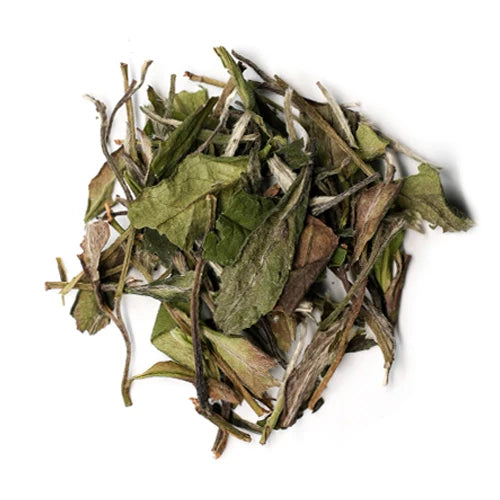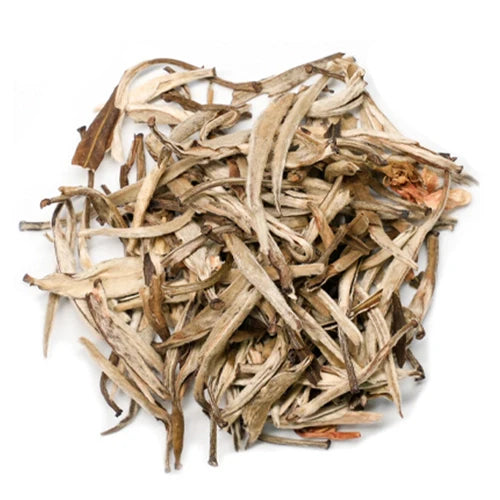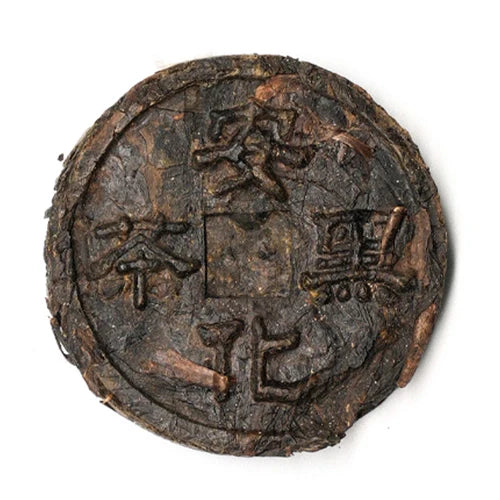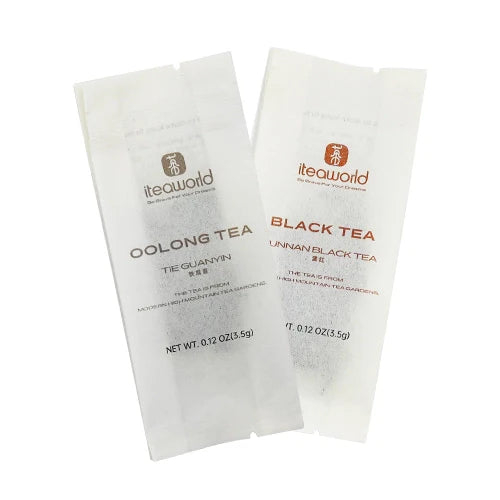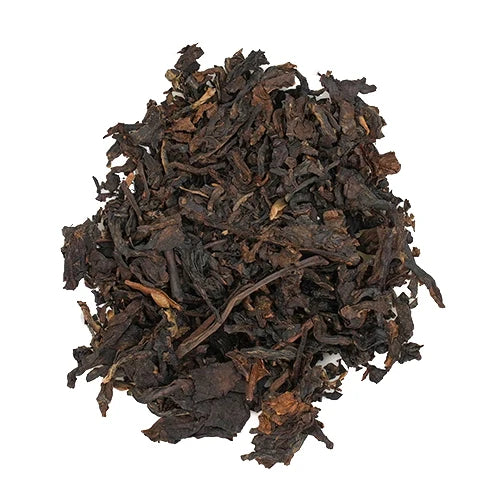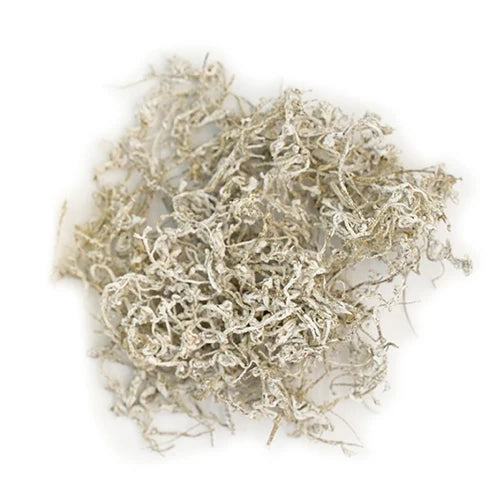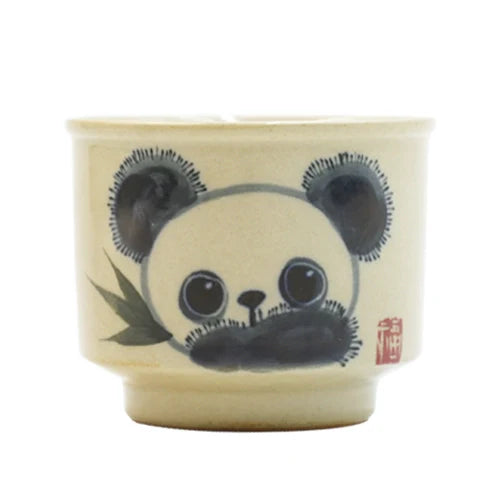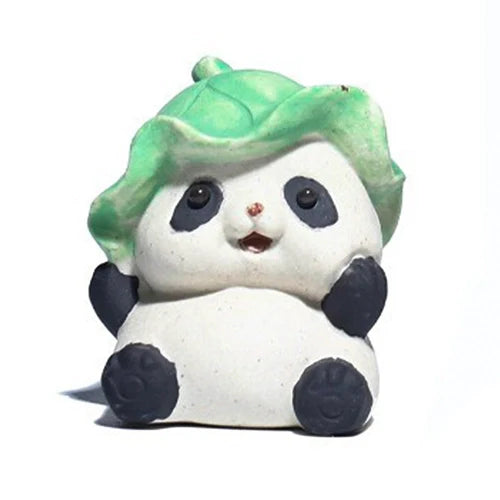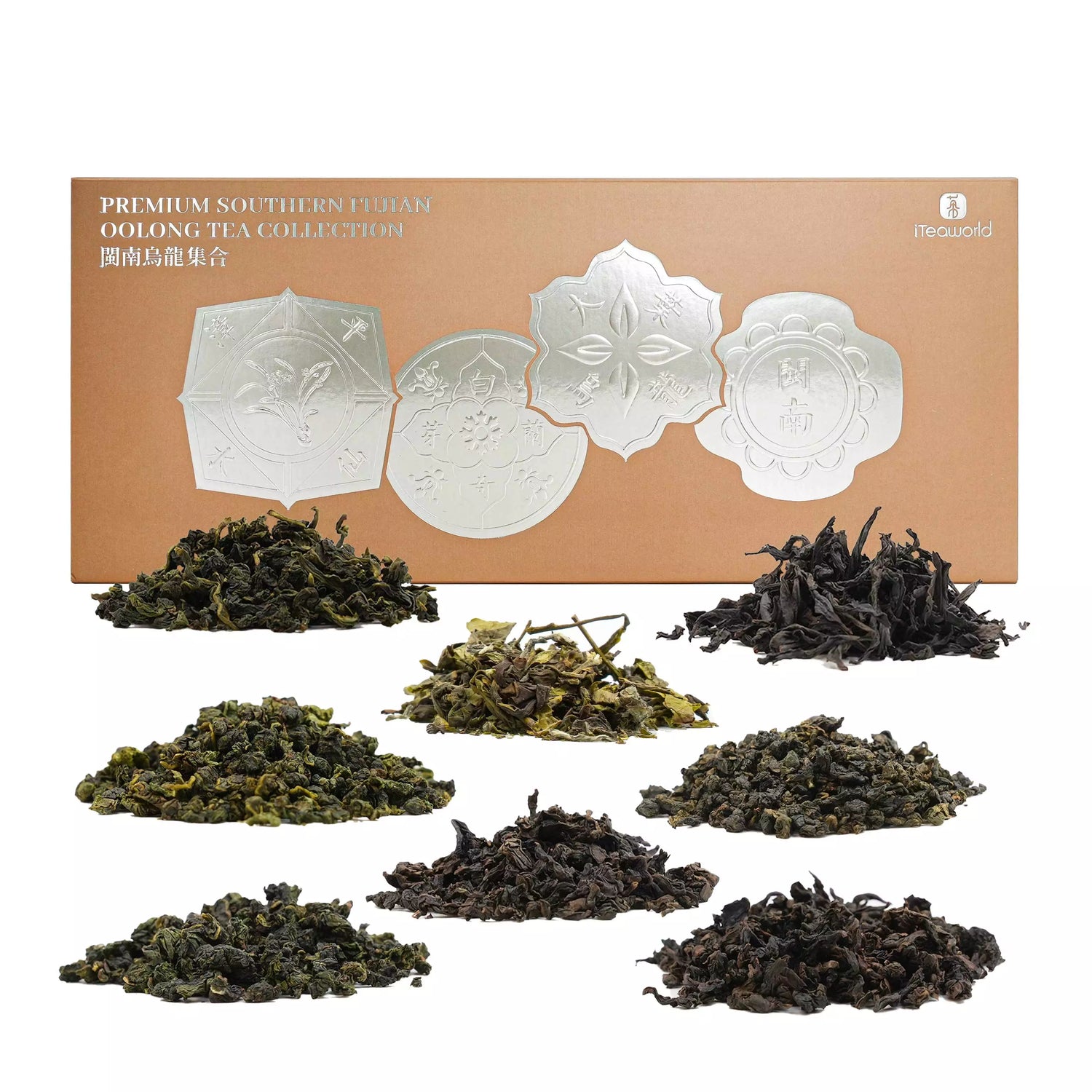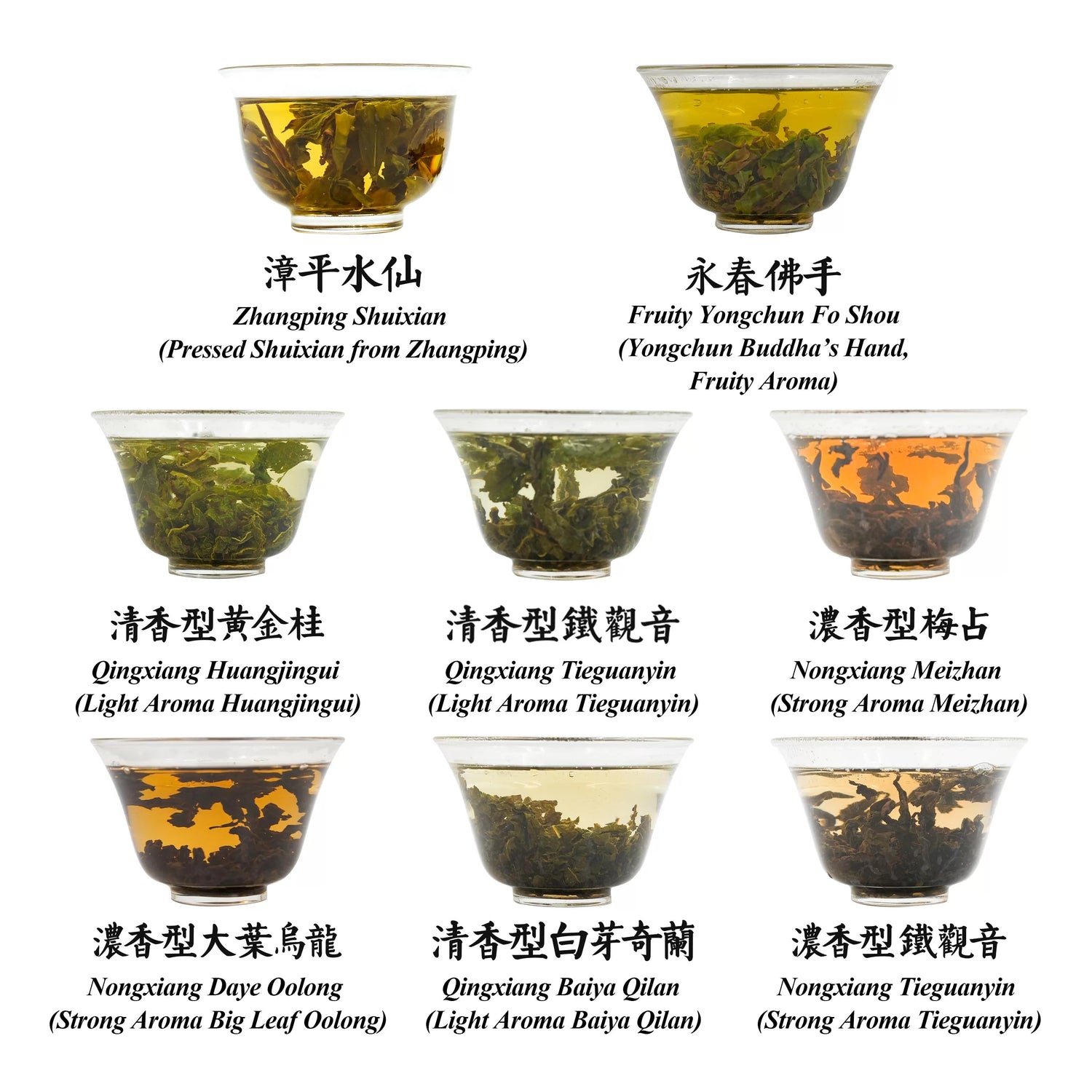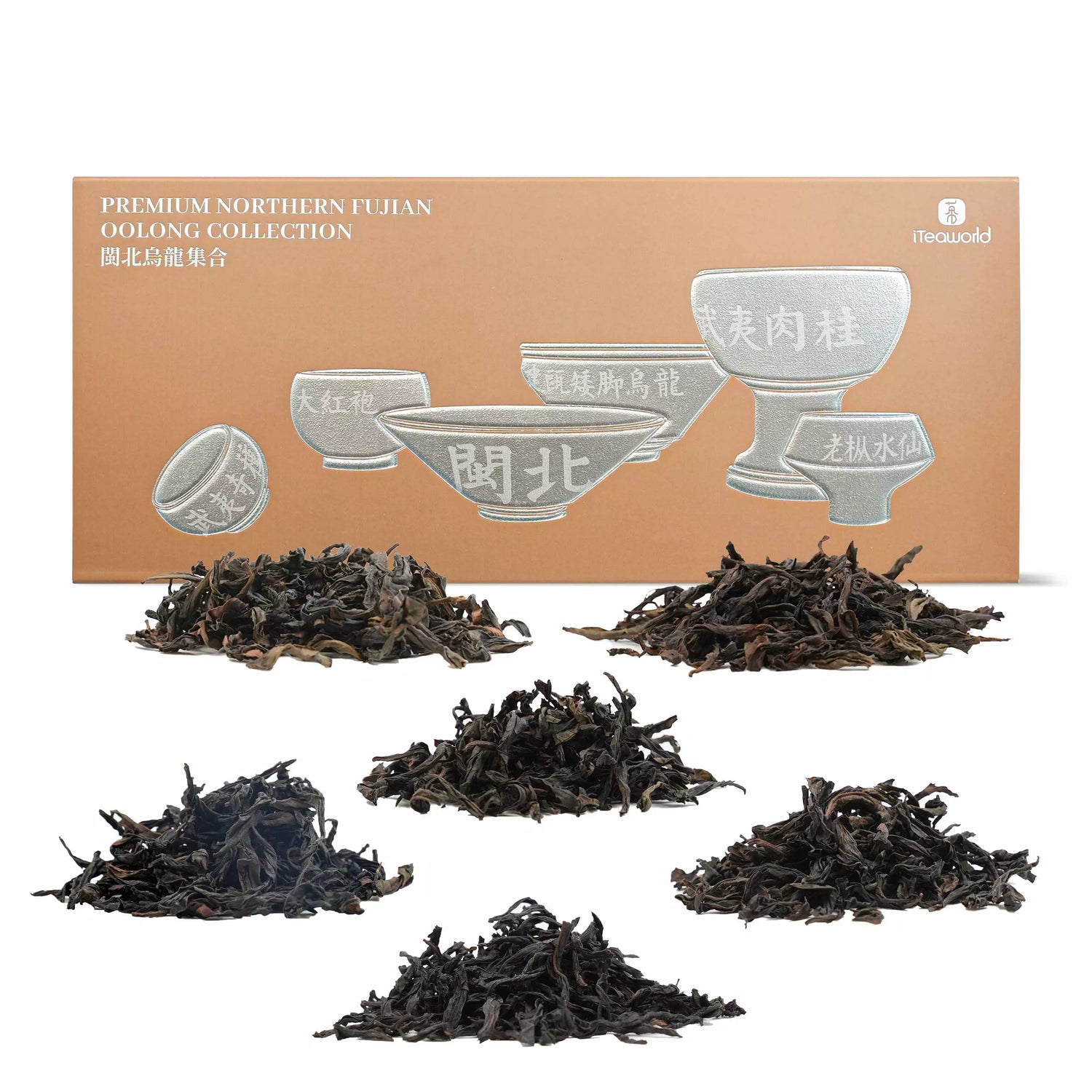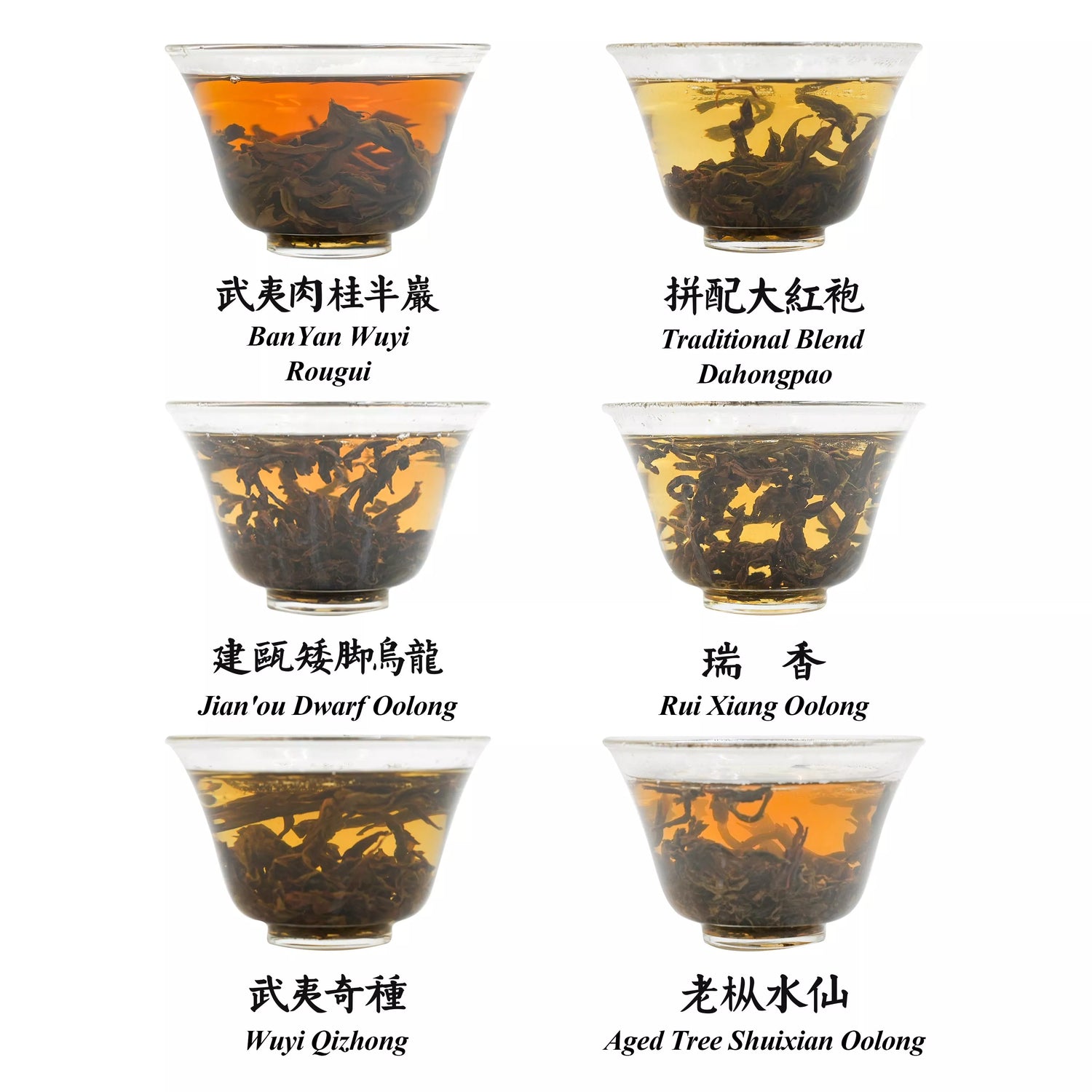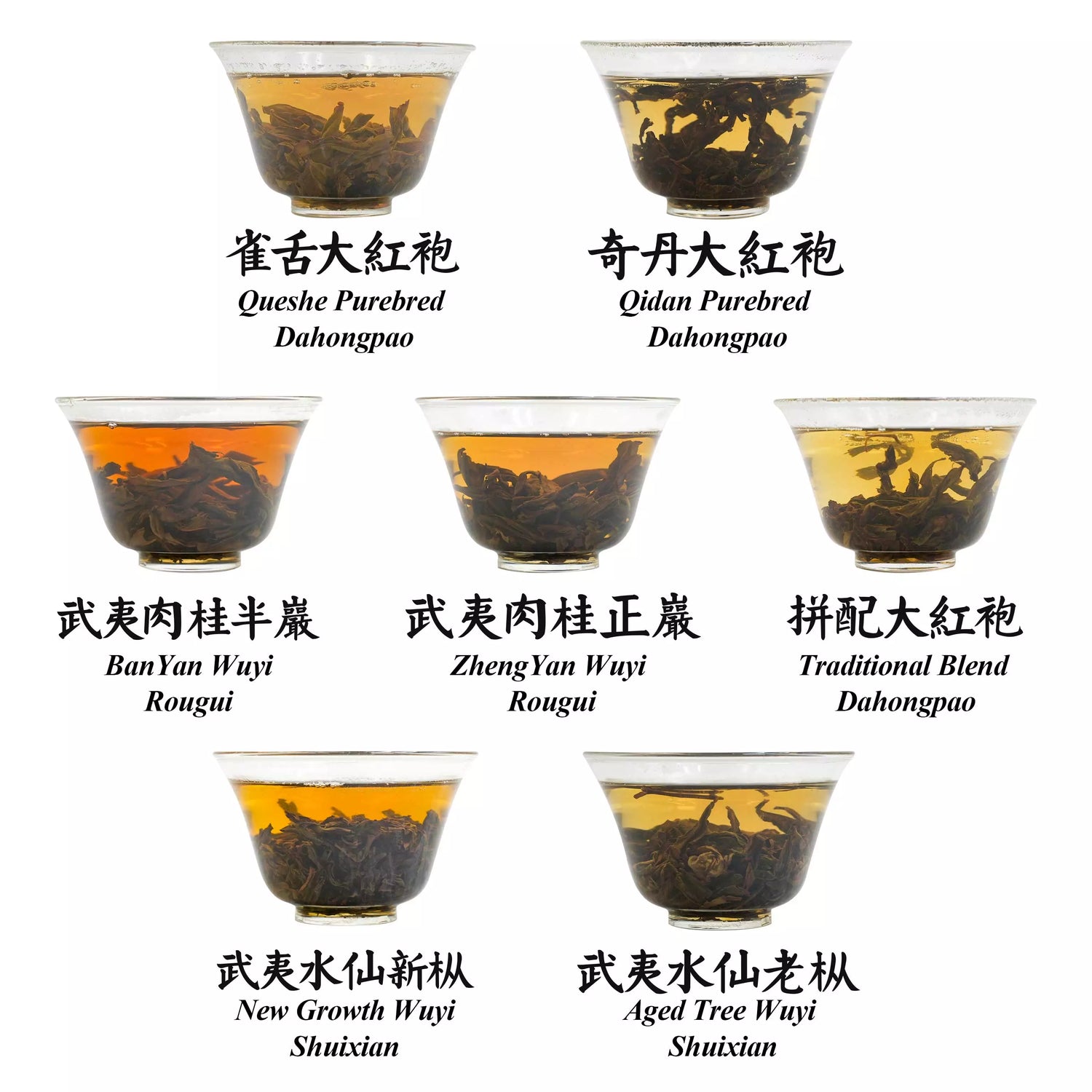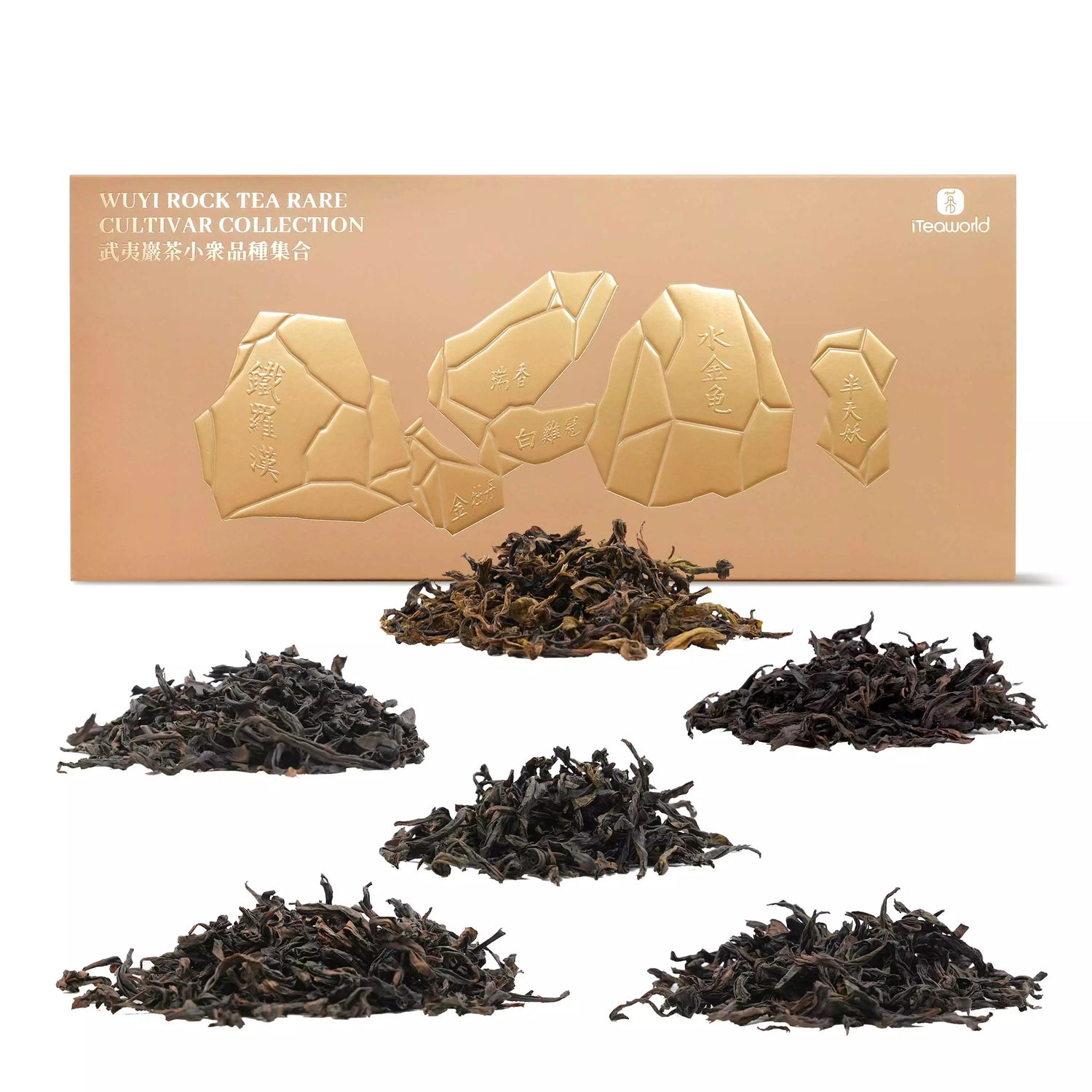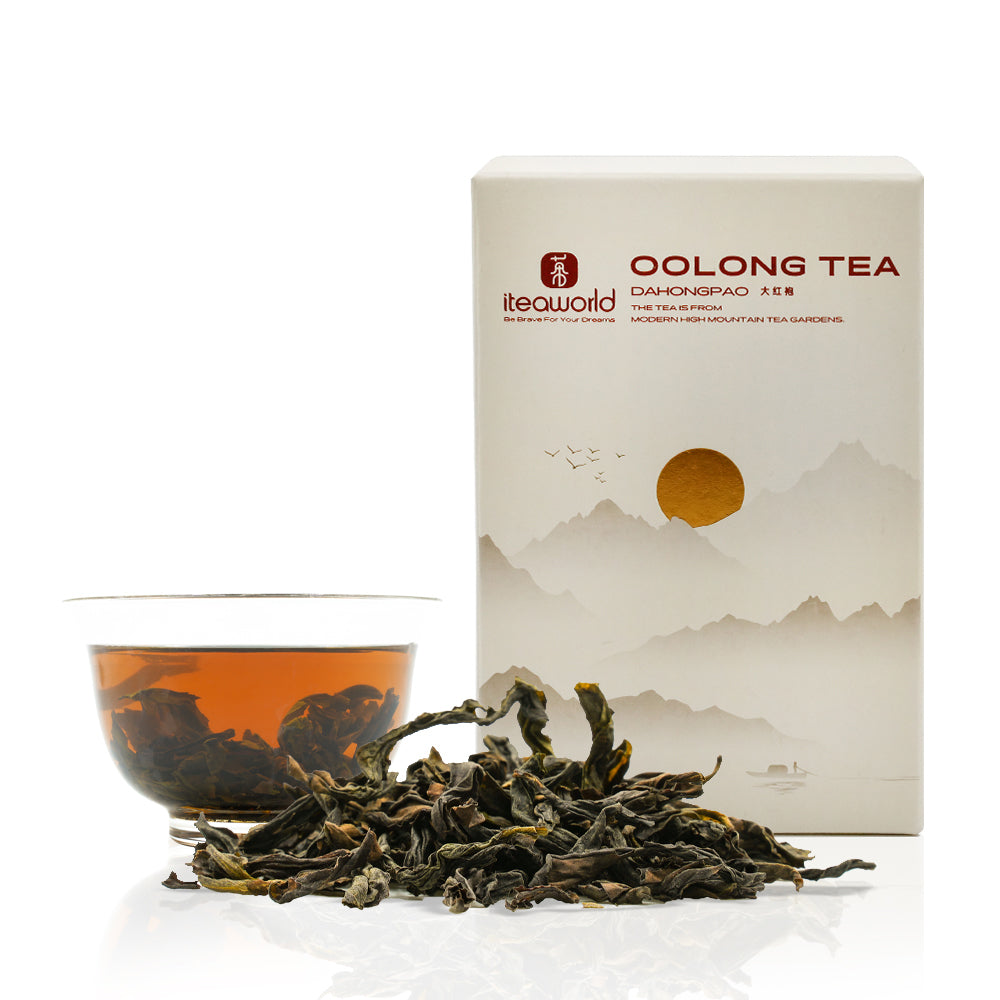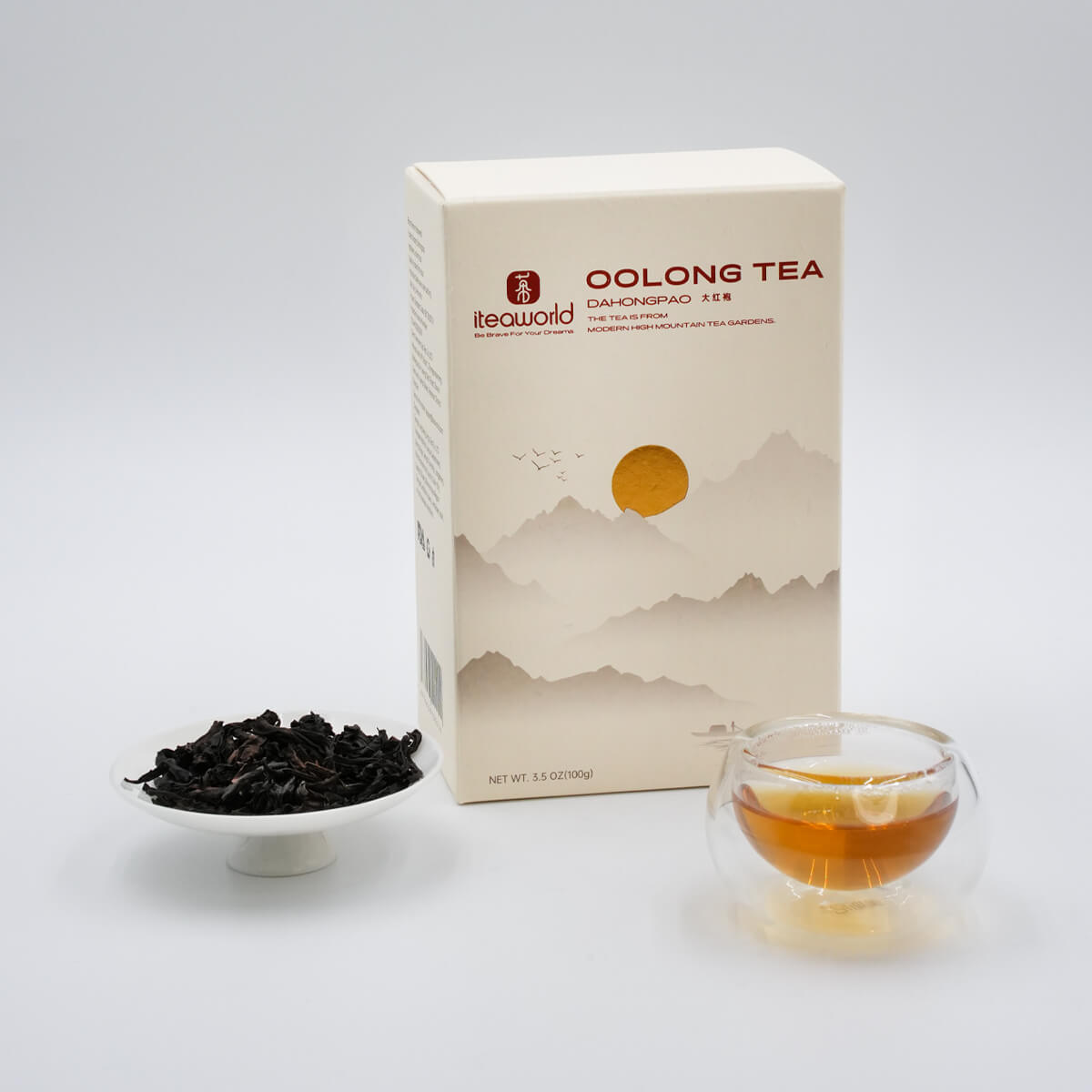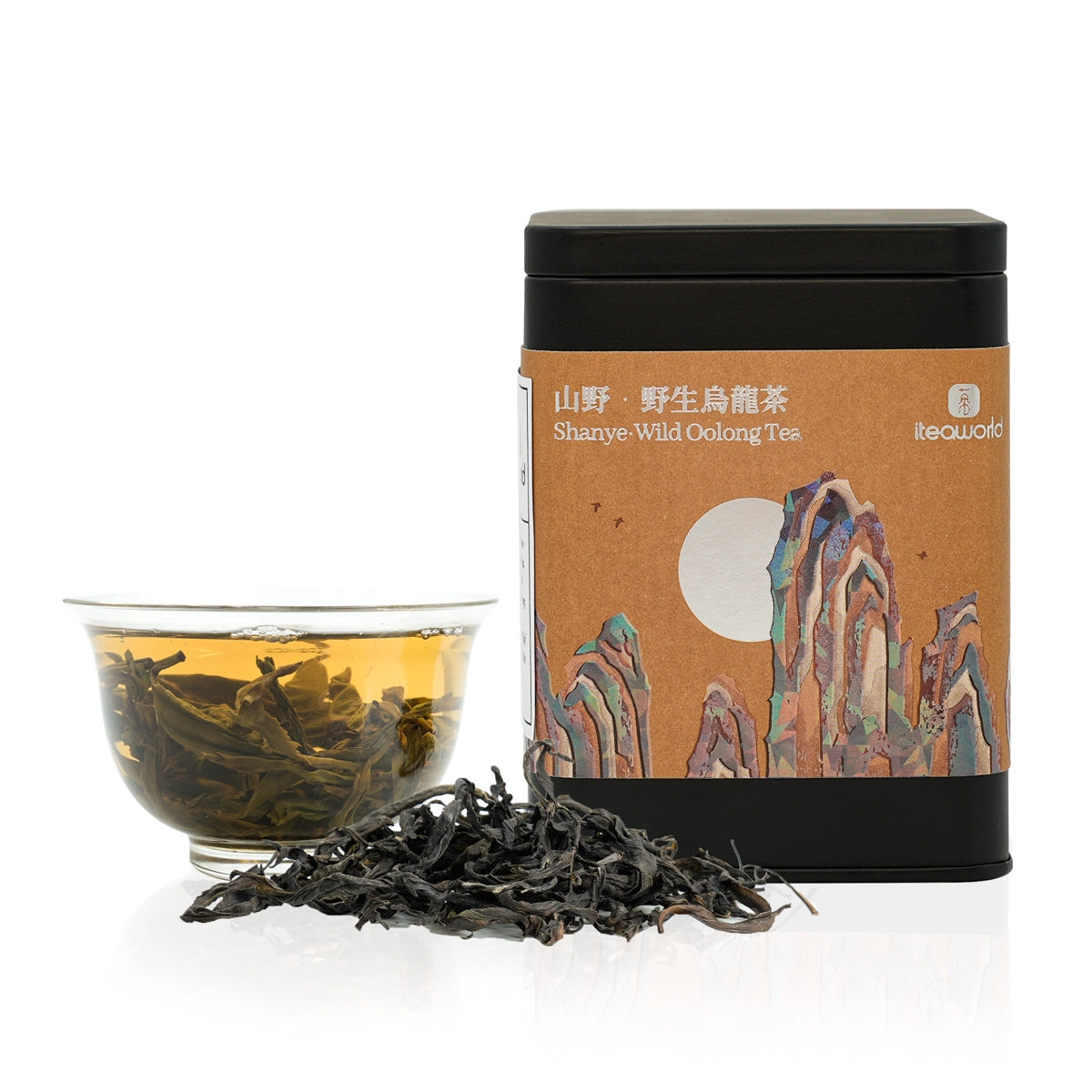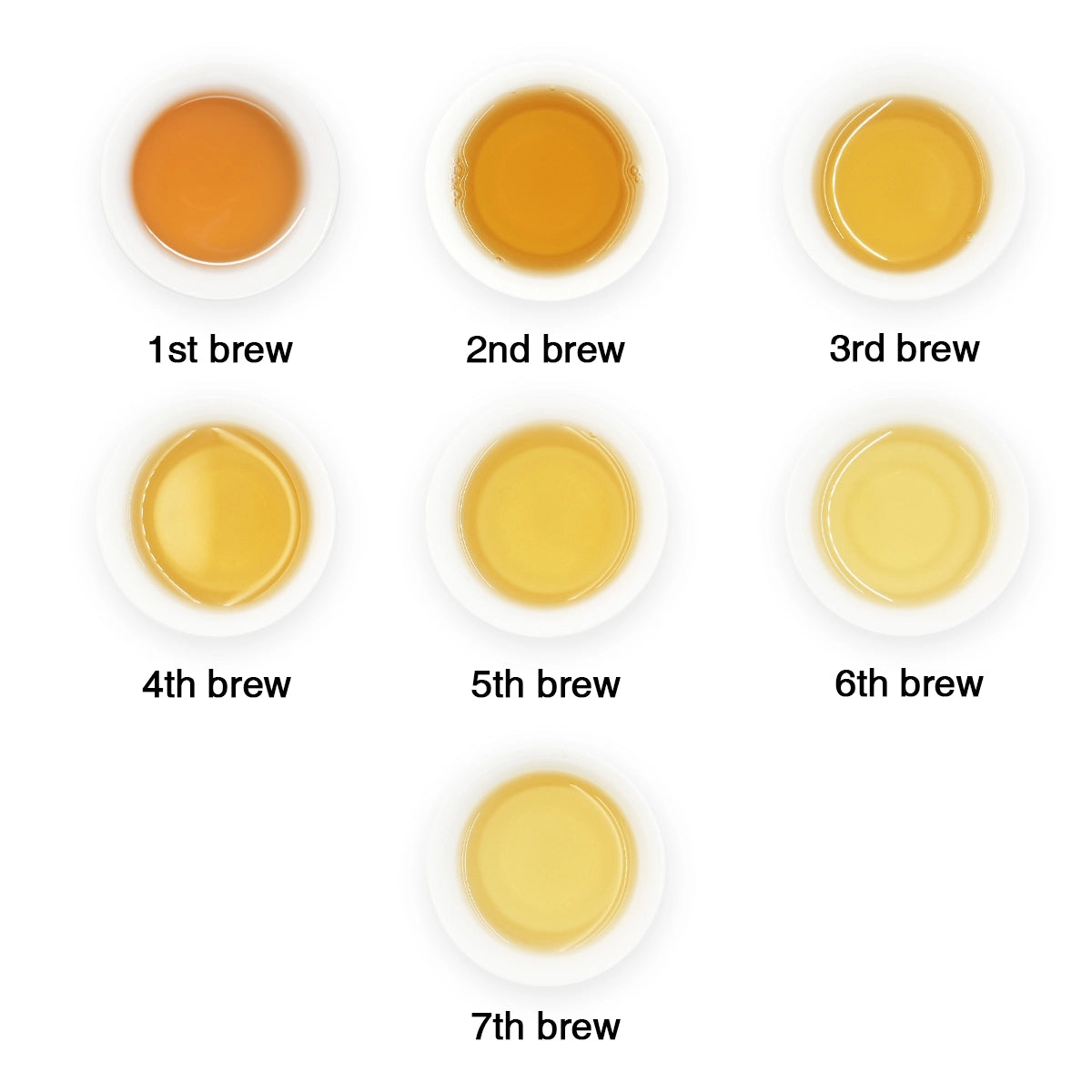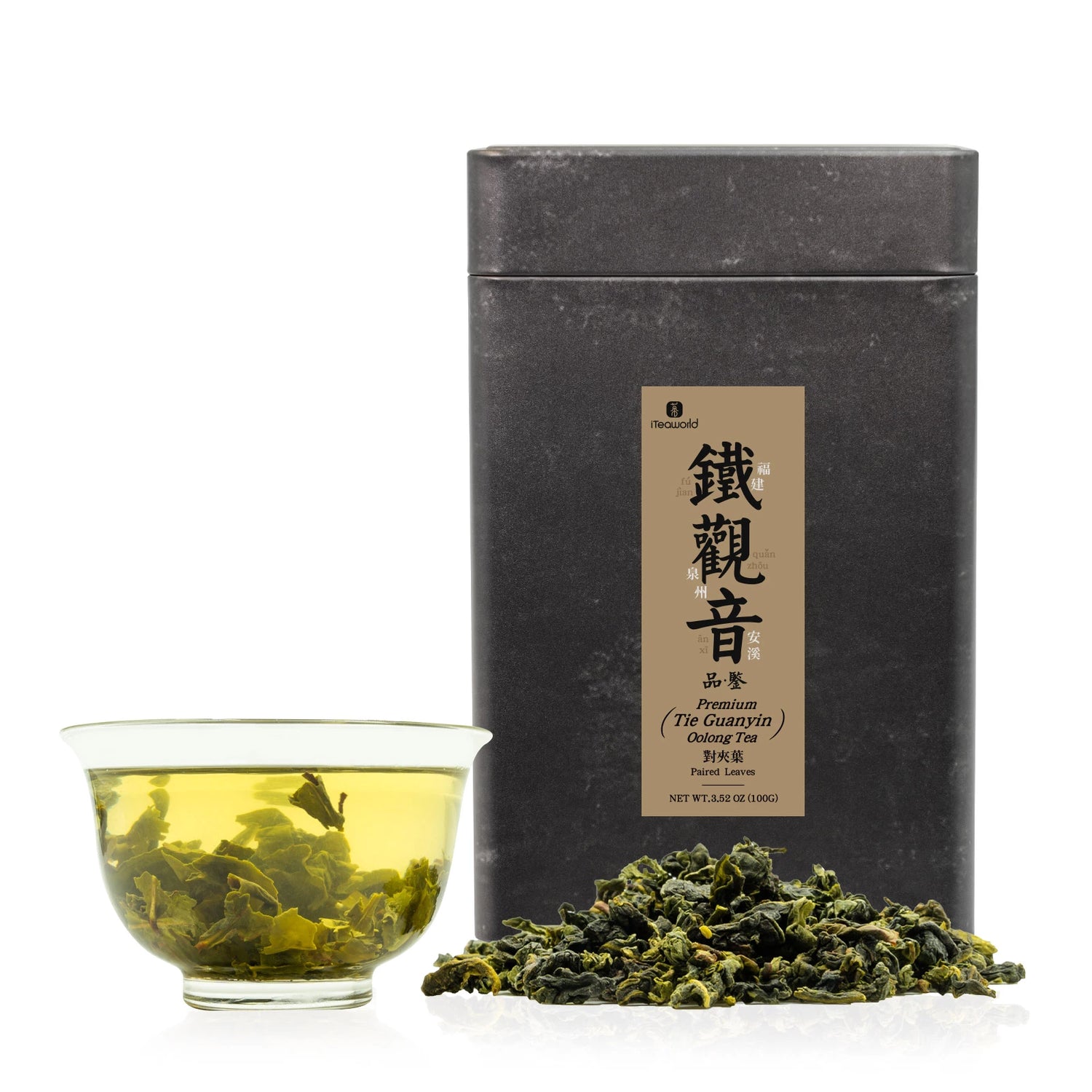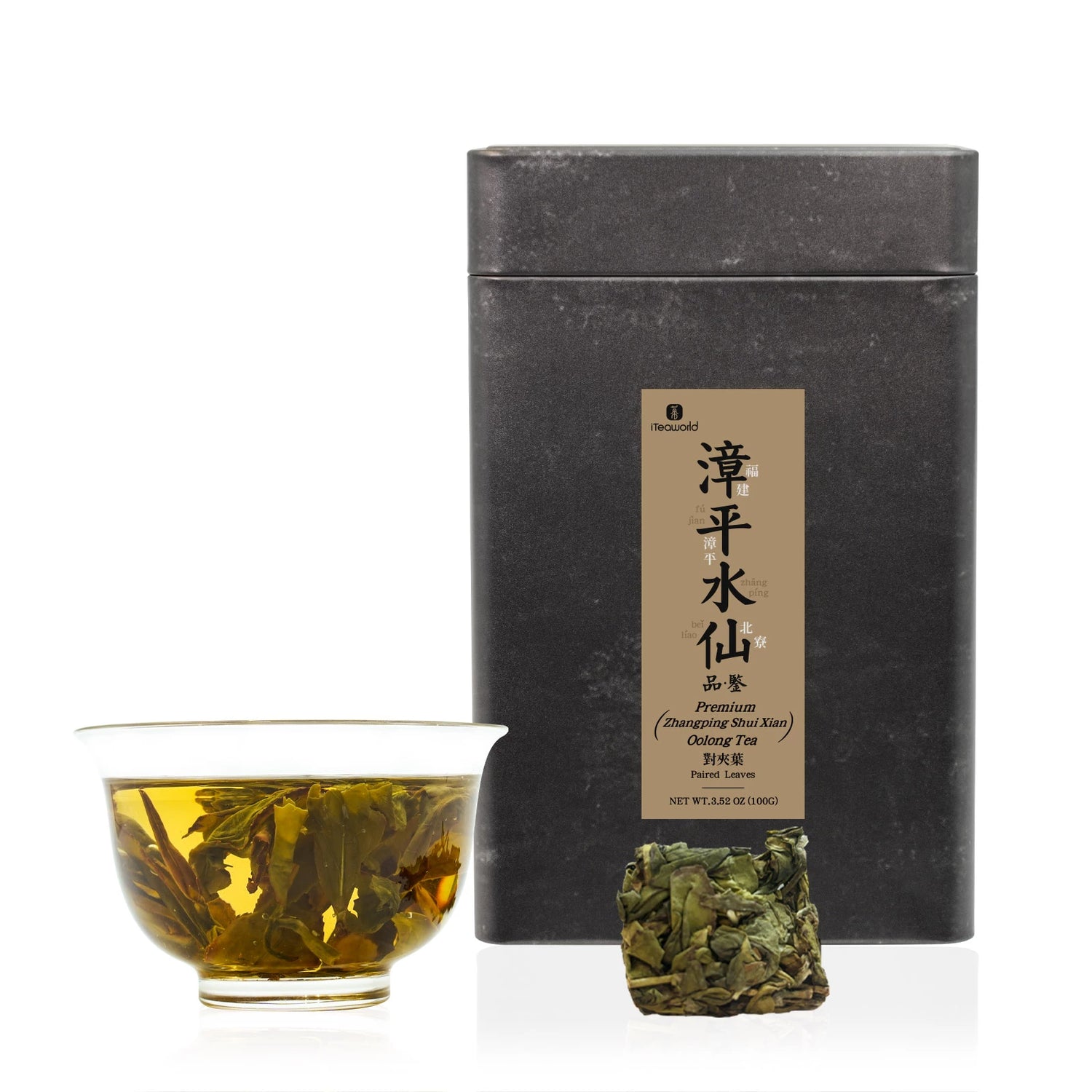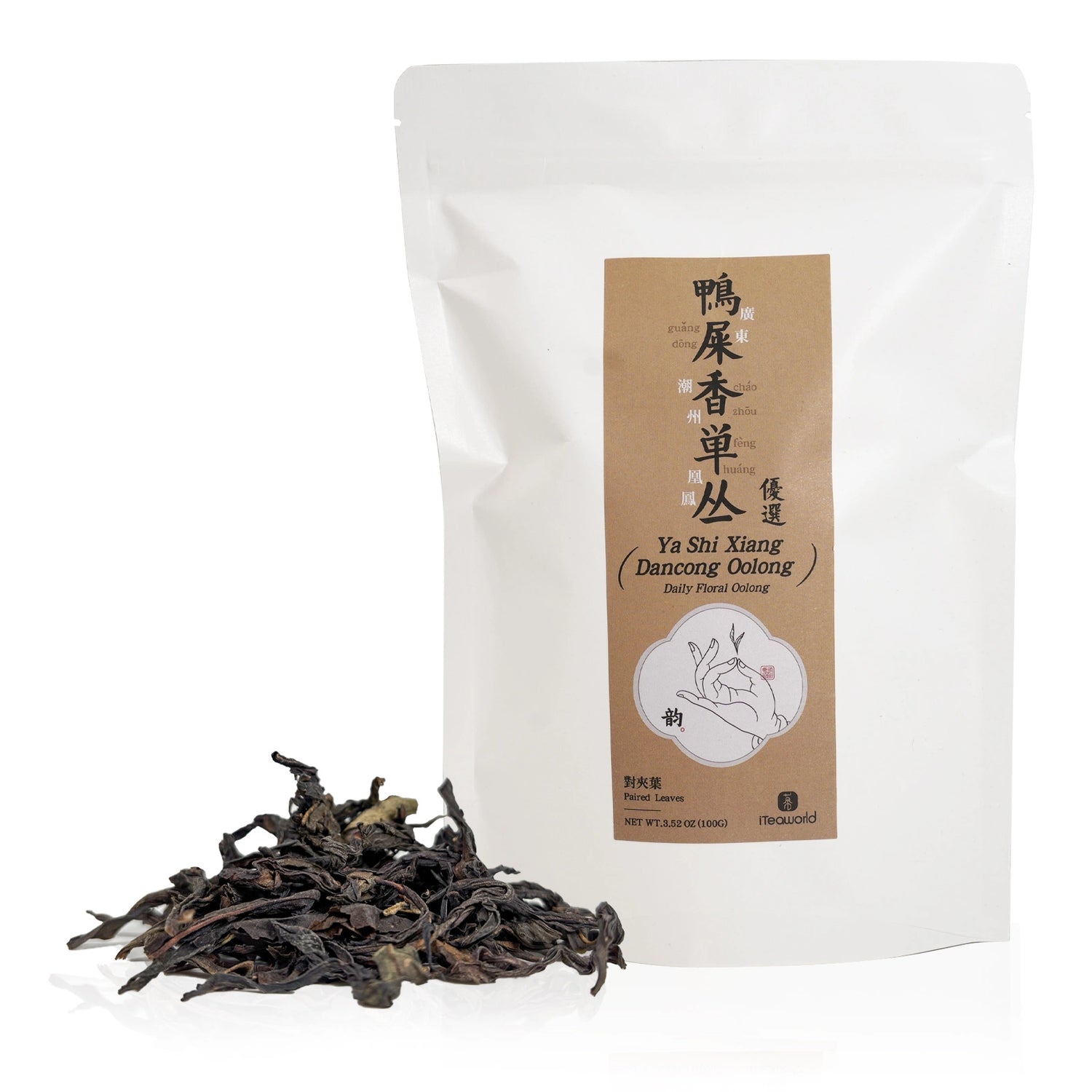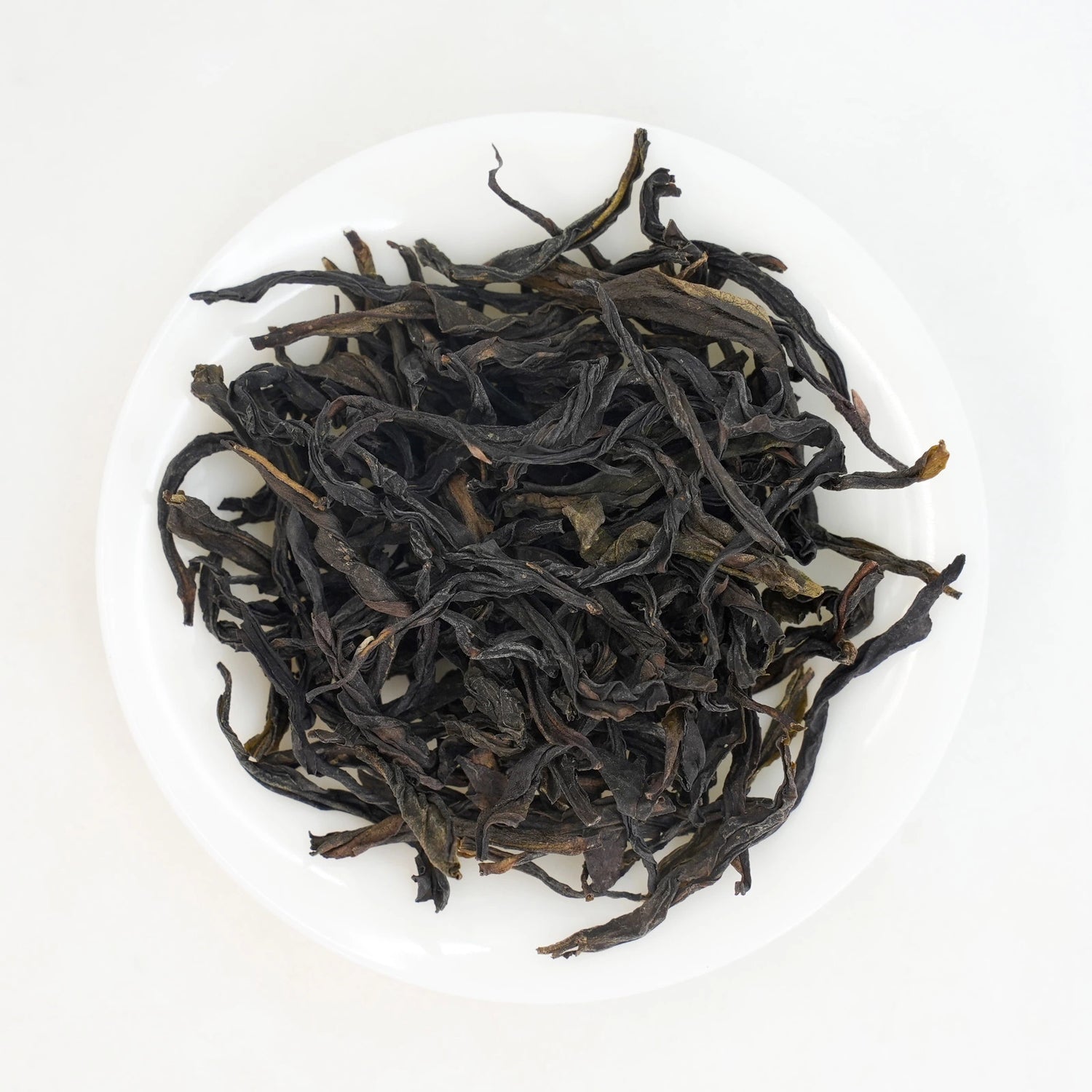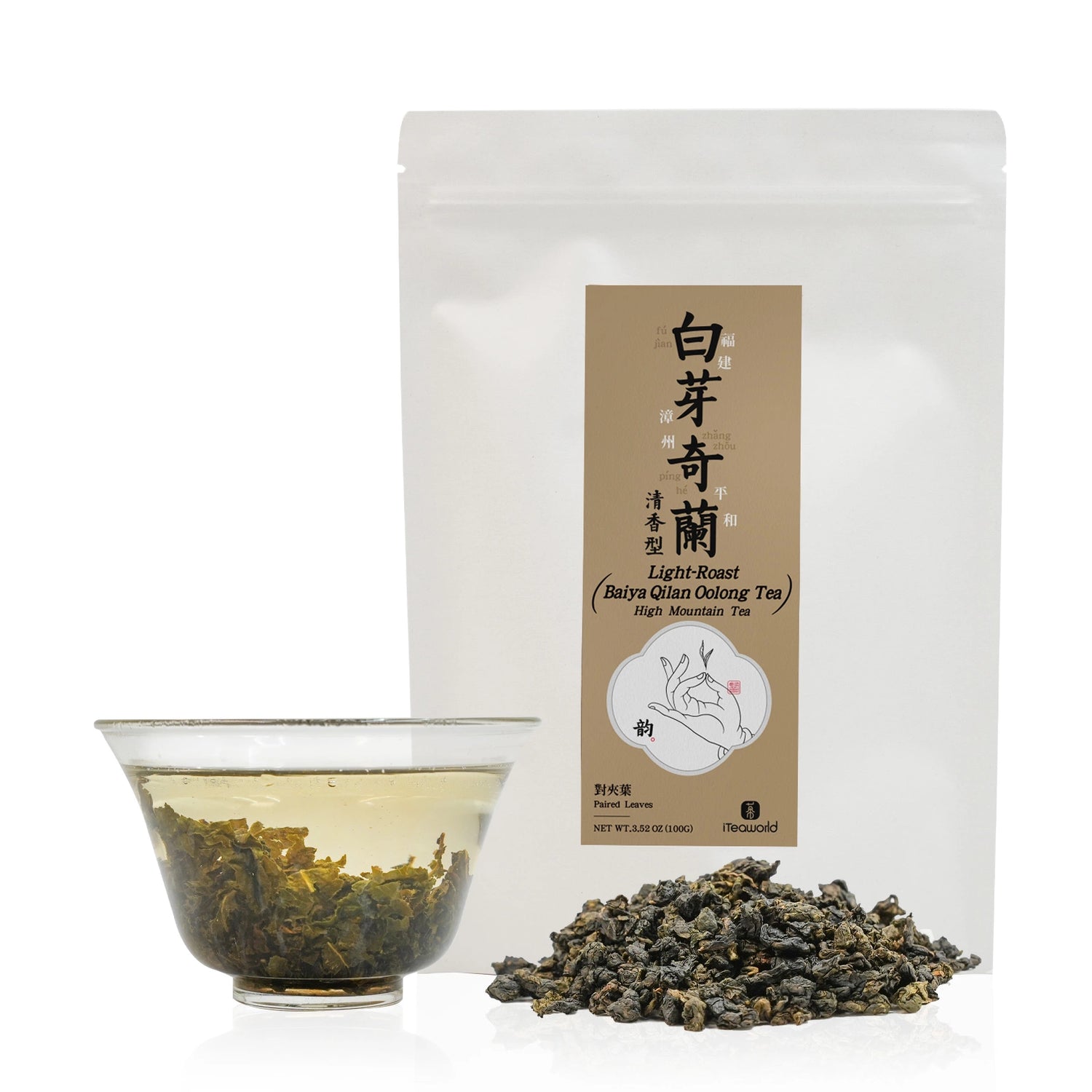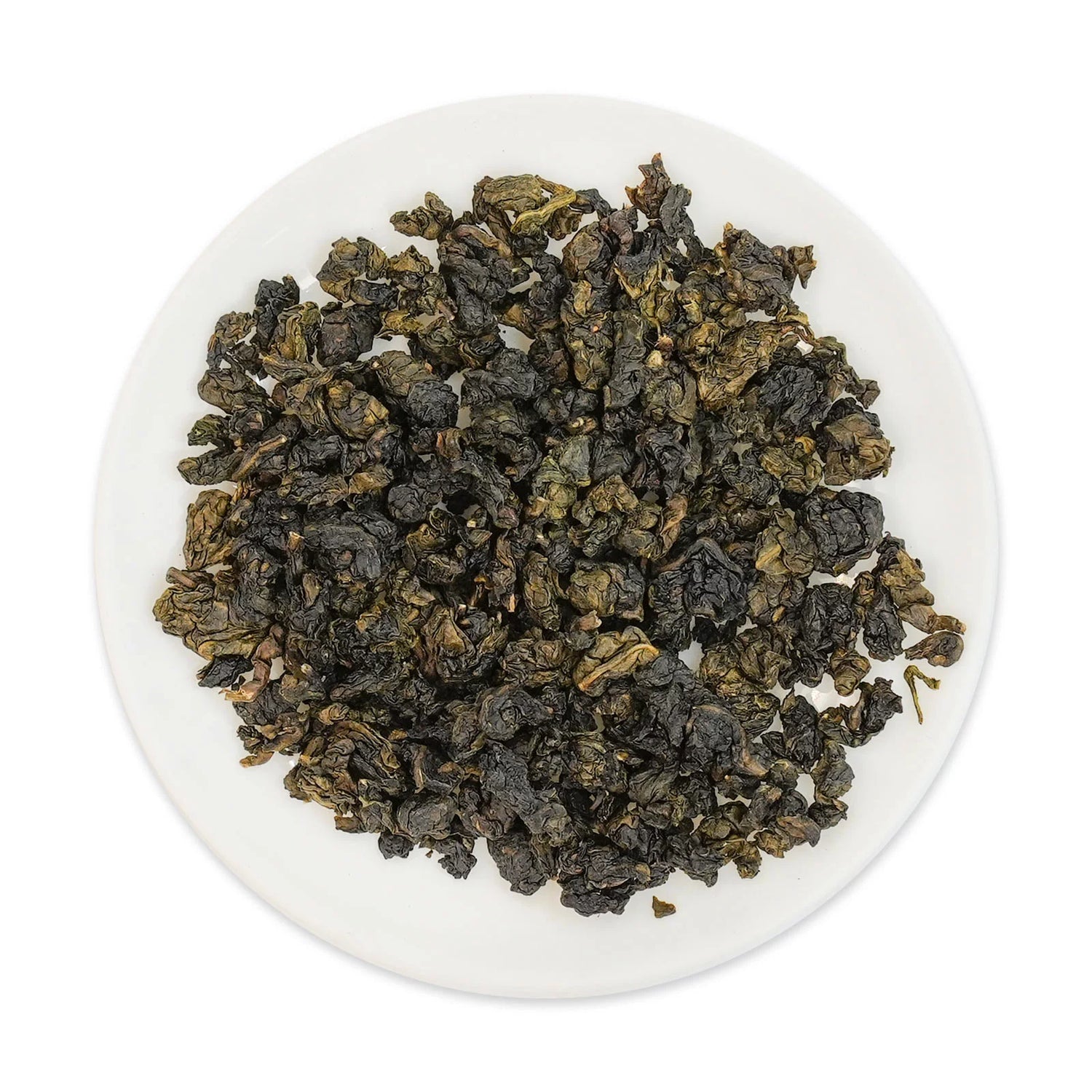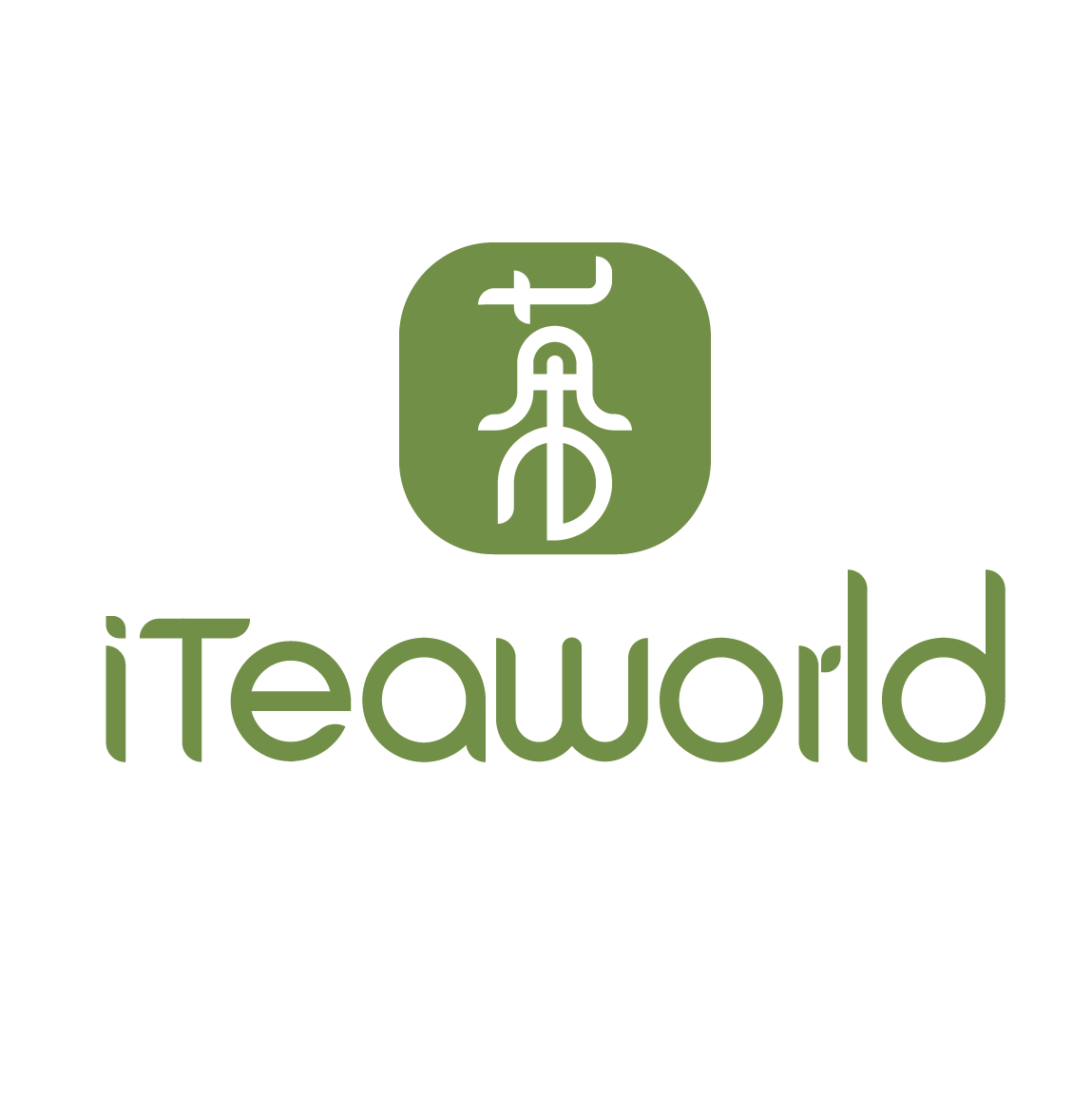Beginner-Friendly Picks
- New to oolong?
Start with the 10 Classic Oolongs – 10 signature flavors, easy 5g tea cakes. - Want to try traditional brewing?
Try the Oolong Sampler – 4 loose-leaf teas for teapots or gaiwans. - Have a flexible budget?
Upgrade to the Oolong Collection – premium quality, elegant presentation for a gift. - Know your taste? Try these:
Da Hong Pao
Bold & Roasted, full-bodied with toasty notes
Tie Guan Yin
Fresh & Floral, bright aroma and crisp taste
Minnan Shui Xian
Smooth & Woody, naturally sweet with a gentle finish
Sort by:
13 products
13 products
Explore the rich legacy of Southern Fujian oolong teas — home to the iconic Tie Guan Yin and Zhangping Shui Xian, both recognized as part of China’s Intangible Cultural Heritage. Since the 17th century, this region has pioneered the art of high-aroma oolongs, known for their floral, fruity, and gently roasted notes. Crafted with time-honored techniques like light oxidation, layered roasting, and meticulous leaf shaping, these teas capture the essence of Minnan tradition. Whether you're a seasoned tea drinker or just beginning your journey, this curated collection offers a true taste of oolong history.
The Northern Fujian region is considered the birthplace of Oolong tea, and the traditional crafting methods of Wuyi Rock Tea have been recognized as part of China’s intangible cultural heritage. This collection brings together iconic oolong varieties from the Song Dynasty (Wuyi Qizhong and Jian'ou Dwarf Oolong) to today (Blended Da Hong Pao, Wuyi Rougui, Aged Tree Shuixian Oolong ), along with emerging cultivars with great future potential (Rui Xiang Oolong). Each tea carries the unique craftsmanship of the region, with its own distinct story and flavor. We hope this collection will allow you to explore the diverse flavors and rich cultural heritage of Northern Fujian (Minnan) Oolong tea.
Product Contains:
Wuyi Qizhong*3 bags* 5g
Jian'ou Dwarf Oolong*3 bags* 5g
Blended Da Hong Pao*4 bags* 5g
Wuyi Rougui *4 bags* 5g
Aged Tree Shuixian Oolong*3 bags* 5g
Rui Xiang Oolong*3 bags* 5g
Processing Time: November 2024
Best Before Date: 36 months
Minnan North Oolong Tea: A Cup, A History, A Story
1. Origins (Tang and Song Dynasties)
- The people used Wuyi Caicha (Qi zhong ) to produce Beiyuan tribute tea (a type of steamed green tea). During transportation, the leaves collided, causing some to turn red and undergo partial oxidation, developing semi-fermented characteristics, which are considered the origins of Oolong tea.
2. Birth (Ming Dynasty)
- After Emperor Zhu Yuanzhang banned compressed tea cakes, the tea farmers of Wuyi Mountain combined green and black tea processing techniques to create semi-fermented Oolong tea.
3. Development (Qing Dynasty)
- Wuyi Cai Tea (Qi Zhong): By the Qing Dynasty, Wuyi Rock Tea had established the basic processes of sun-drying, shaking, and roasting. The Wuyi Rock Tea system had matured, with the earliest representative varieties being Wuyi Cai Tea (Qi Zhong) and its derivative four famous cultivars (Da Hong Pao, Bai Ji Guan, Tie Luo Han, Shui Jin Gui).
- Jian'ou Dwarf Oolong: Originally from the Dongfeng Town of Jian'ou, the Dwarf Oolong (also known as Xiao Ye Oolong) was introduced to Wuyi Mountain, where it was improved through craftsmanship, including charcoal roasting, imparting it with signature peachy aroma and strong mineral finish made it a favorite for blending, earning the nickname “Prime Minister of Tea”.
- Wuyi Rougui: Rou Gui, another celebrated rock tea, dates back to the Qing dynasty. It was once rare and scattered in the rocky core of Wuyi, but it expanded in the 1960s through cutting and propagation.
- Wuyi Shui Xian: Shui Xian, introduced from Jianyang in the 1800s, became a Fujian classic thanks to its rich, woody flavor and thick body.
4. Prosperity (20th Century to Present)
- Blended Da Hong Pao: In the 20th century, breakthroughs in asexual reproduction techniques allowed the successful propagation of Da Hong Pao by cutting in 1982, leading to the mass production of pure Da Hong Pao after the mother tree ceased harvesting in 2006.
- Rui Xiang: New hybrid varieties such as Jin Mudan, Huang Guanyin, and Rui Xiang were developed by crossbreeding traditional types like Rou Gui, Shui Xian, and Huang Jin Gui. Rui Xiang, in particular, is known for its ever-changing aroma—from frankincense and gardenia to osmanthus, peach, and honey—earning it the nickname “The Shape-Shifter” of rock teas.
Unique Crafting Characteristics:
1. Heavy Fermentation & Oxidation
Northern Fujian oolong follows a unique processing style: longer withering under sunlight, light but repeated shaking, multiple oxidation cycles, and deep fermentation. Compared to Southern Fujian oolongs (which are 10%-30% oxidized), Northern Fujian oolongs range from 25-55% oxidation, giving the tea a rich amber-gold color and a smoother, more full-bodied taste.
2. Charcoal Roasting Process
Charcoal roasting is a signature technique of Northern Fujian Oolong teas. It involves three key stages:
Initial Roast ("Water Walk"): High heat (~150°C) is used to quickly remove surface moisture and grassy notes.
Second Roast (Slow Roast): A gentle, extended roast lasting 10-18 hours, with the temperature gradually lowered to ~80°C. This stage develops rich caramel and mineral notes.
Final Roast (Aging Roast): A very low, slow roast at 60–80°C for 12-24 hours. This step reduces the leaf’s moisture to 3–5%, boosting shelf life and aging potential.
Only dense hardwood charcoal—like longan or lychee wood—is used to ensure a steady, even roast.
This traditional method produces a warm, rounded flavor with a deep roasted aroma, offering a smoother and more refined character than the sharper taste of electric-roasted teas.
3. Rolling & Shaping
No Ball-Rolling – Unlike Southern Fujian oolongs, Northern Fujian oolongs are not tightly rolled, preserving their long, twisted leaf shape with a glossy dark hue and reddish-brown highlights.
Double Frying & Rolling – The tea is fried and rolled twice, ensuring an even release of its inner essence and creating a thicker, silkier tea liquor.
Brewing Recommendations:
Teaware:
Gaiwan (110- 150ml): Best for aromatic teas (Rougui, Dangui).
Yixing Clay Teapot: Ideal for heavily roasted or aged teas.
Water:
Use 100°C (boiling) spring or purified water.
Tea-to-Water Ratio:
5g tea / 110ml water.
Brewing Tips:
Preheat & awaken tea.
High pour for aroma, low pour for smoothness.
Quick steeps (5-10s) for first 3 infusions, then extend.
Fully drain after each brew.


Guangdong Oolong Tea Collection: 6 Historical Flavors for Tea Lovers 100g
$49.99 USD
Unit price perGuangdong Oolong Tea Collection: 6 Historical Flavors for Tea Lovers 100g
$49.99 USD
Unit price perA Boxed Journey into the Essence of Guangdong Oolong
From the ancient Shiguping oolong crafted by the She ethnic group over 1,500 years ago to today’s highly aromatic Dancong teas, this curated set brings together six signature teas from Chaozhou, Meizhou, and Raoping—the three core regions of Guangdong. A flavorful journey through 500 years of tea-making heritage.
Fenghuang Dancong 10 Aromas Collection
Discover the essence of Chinese Gongfu tea culture with this unique Fenghuang Dancong oolong tea set, featuring 10 distinct natural aromas like Jasmine, Gardenia, Honey Orchid, and more. Known as the "perfume of tea," this collection showcases the diverse flavors created by different tea bush varieties from Fenghuang Town, the heart of Dancong tea production.
Whether you’re a fan of fragrant teas, a Gongfu tea enthusiast, or simply curious about the rich aromas and flavors of oolong tea, this set offers a sensory journey you won’t forget. Beautifully curated, it’s an ideal gift for tea lovers who appreciate authentic, aromatic, and high-quality teas.
What is Fenghuang Dancong tea?
Fenghuang Dancong tea is a type of oolong tea, which is selected and bred from the Fenghuang Shuixian group. Each individual plant has its own unique shape and variety, forming its own product line, hence the name "Dancong," which means "single bush" or "single strain." This tea is mainly characterized by its ability to withstand multiple infusions, its strong aftertaste, and its high, lingering aroma. It's known as the most fragrant oolong tea due to its distinctive fragrance. Based on different aromatic types, Fenghuang Dancong is divided into various scented categories.
The product includes:
Fenghuang Dancong Oolong Tea(Huang Zhi Fragrance)2*5g
Fenghuang Dancong Oolong Tea(Orchid Fragrance)2*5g
Fenghuang Dancong Oolong Tea(Honey Orchid Fragrance)2*5g
Fenghuang Dancong Oolong Tea(Magnolia Fragrance)2*5g
Fenghuang Dancong Oolong Tea(Ginger Flower Fragrance)2*5g
Fenghuang Dancong Oolong Tea(Osmanthus Aroma)2*5g
Fenghuang Dancong Oolong Tea(Cinnamon Fragrance)2*5g
Fenghuang Dancong Oolong Tea(Almond Fragrance)2*5g
Fenghuang Dancong Oolong Tea(Night-scented Stock)2*5g
Fenghuang Dancong Oolong Tea(Jasmine Fragrance)2*5g
Origin:
Fenghuang Town, Chaozhou City, Guangdong Province.
Introduction to the Top 10 Fragrance Types of Fenghuang Dancong Tea
Fenghuang Dancong Oolong Tea(Huang Zhi Fragrance):A high-quality single bush tea with a natural gardenia fragrance.
Fenghuang Dancong Oolong Tea(Orchid Fragrance):Features the aroma of orchids, fresh and subtle.
Fenghuang Dancong Oolong Tea(Honey Orchid Fragrance):The most popular type, known for its strong honey flavor combined with orchid fragrance, hence the name Milan.
Fenghuang Dancong Oolong Tea(Magnolia Fragrance): Fresh and elegant, with the aroma of magnolia flowers.
Fenghuang Dancong Oolong Tea(Ginger Flower Fragrance):Also known as 'Penetrating Heaven Fragrance', named for the uplifting ginger flower scent when the tea is brewed.
Fenghuang Dancong Oolong Tea(Osmanthus aroma): Reminiscent of osmanthus flowers, sweet and lingering.
Fenghuang Dancong Oolong Tea(Cinnamon Fragrance): Named for the tea's flavor that resembles the taste of cinnamon, a traditional Chinese medicine.
Fenghuang Dancong Oolong Tea(Almond Fragrance):Also known as 'Sawtooth', named for the serrated edges of the leaves, with a distinct almond aroma.
Fenghuang Dancong Oolong Tea(Night-scented Stock): Night-scented Stock Dancong is famous for its unique evening fragrance and flavor. It's mainly produced in Fengxi Dan Lake, Fenghuang Town, and is quite rare.
Fenghuang Dancong Oolong Tea(Jasmine Fragrance): A unique fragrance type with the scent of jasmine flowers, refreshing and delightful.
Brewing Tips
Recommended Method: Traditional Gongfu style.
Best Teaware: White porcelain gaiwan or Yixing clay teapot.
Tea-to-Water Ratio: Use 5g of tea for 100ml of water.
Water Temperature: 212℉ (100℃).
Steeping Times:
First rinse: Quick pour, discard the rinse.
2nd–5th infusions: Steep for 6–8 seconds.
6th–10th infusions: Steep for 10–15 seconds.
Brewing Durability: Authentic Dancong from Chaozhou's Fenghuang region can be steeped 12–15 times.
Technique: Pour water along the edge of the gaiwan in a steady stream. Tilt the lid slightly to leave a small gap to prevent over-steaming.
A semi-fermented oolong tea grown in the rocky crevices of Fujian’s Wuyi Mountain, renowned for its unique "rock bone floral aroma" (Yan Yun). Only tea cultivated within Wuyi City’s protected region can bear this name. Other areas (e.g., Anxi) do not produce Rock Tea.
This collection features the three most iconic Wuyi rock teas—Da Hong Pao, Shuixian, and Rougui—along with their key variations. You’ll taste the difference between blended and purebred Da Hong Pao, young and old Shuixian trees, and core vs. semi-core Rougui. A guided journey into the depth and complexity of Wuyi rock tea.
How to Start with Wuyi Rock Tea?
For newcomers, we recommend starting with Blended Da Hong Pao, Shuixian, and Rougui—classic, accessible, and well-balanced teas that offer a great introduction to Wuyi Rock Tea.
Blended Da Hong Pao – The most famous Wuyi Rock Tea, blended for a harmonious taste of rock minerality, floral-fruity notes, and roasted depth. The perfect benchmark for beginners.
Shuixian – Smooth and mellow with woody sweetness and a lingering finish. Ideal for those who prefer a rich, rounded texture.
Rougui – Spicy cinnamon aroma with a bold, warming character. A great choice for adventurous palates.
Why start with these?
Easy to find – Widely available & consistent in quality.
Affordable – Great value for authentic Wuyi Rock Tea.
Versatile – Covers the core flavor profiles of "Yan Yun" (rock essence)。
Product Contains:
Traditional Blend Dahongpao* 3 bags* 5 g
Qidan Purebred Dahongpao*3 bags* 5 g
Queshe Purebred Dahongpao* 3 bags* 5 g
New Growth Wuyi Shuixian* 3 bags* 5 g
Aged Tree Wuyi Shuixian*3 bags* 5 g
BanYan Wuyi Rougui* 3 bags* 5 g
ZhengYan Wuyi Rougui* 2 bags* 5 g
Tea Master: Chen Hui 陈辉
Origin: Jingshui Village, Xingcun Town, Wuyishan City, Fujian Province
Processing Time: November 2024
Best Before Date: 36 months
Elevation: 400-600 meters
Soil: Gravel soil
Oxidation: 45-55%
Roast Level: Medium fired
Roasting Method: charcoal roasting
How to Brew Wuyi Rock Tea?
Water: Use filtered or spring water (avoid hard water).
Teaware: Yixing clay teapot for medium-high roast; porcelain gaiwan for lighter roast.
Awakening: Aged tea: dry wake for 1 hour; new tea: optional.
Temperature: 95–100°C (203–212°F).
Tea-to-Water Ratio: 5g per 90–100ml (1:20).
Steeping: First 3 infusions: 5–10 sec; increase by 5–10 sec after. 8–10 infusions total.
Aged Shui Xian: First steep 20 sec to enhance aroma.
Tips:
Light roast (Que She, new Shui Xian): Avoid prolonged high heat.
Full roast (Beidou, aged tea): Use boiling water to activate flavors.
Boiling water for bold teas (Rou Gui, Beidou): lower temp for delicate teas (Que She, new Shui Xian).
Who would enjoy this tea?
This collection is perfect for those who have explored the classic Wuyi rock teas and are ready to dive deeper into its rare and distinctive varieties. It includes historically renowned teas like Tie Luohan, Bàn Tiān Yāo, Bai Ji Guan, Shui Jin Gui, and Bai Rui Xiang, along with newer, highly sought-after cultivars like Rui Xiang and Jin Mudan. A journey through the diverse flavors and craftsmanship of Wuyi rock tea.
Product Contains:
Tie Luohan (Iron Arhat)* 3 bags* 5 g
Bai Jiguang (White Cockscomb)* 3 bags* 5 g
Shui Jin Gui (Golden Water Turtle)* 4 bags* 5 g
Bantian Yao (Half-Heaven Goblin)* 3 bags* 5 g
Jin Mudan (Golden Peony)* 4 bags* 5 g
Bairuixiang (Hundred-Fragrance Orchid) * 3 bags* 5 g
Tea Master: Chen Hui 陈辉
Origin: Jingshui Village, Xingcun Town, Wuyishan City, Fujian Province
Processing Time: November 2024
Best Before Date: 36 months
Elevation: 400-600 meters
Soil: Gravel soil
Oxidation: 45-55%
Roast Level: Medium fired
Roasting Method: charcoal roasting
Rare Wuyi Rock Tea Cultivars: Hidden Gems from the Core of Zhengyan
While teas like Da Hong Pao, Rou Gui, and Shui Xian have become well-known representatives of Wuyi Rock Tea, the rare cultivars—such as Tie Luo Han, Bai Ji Guan, Shui Jin Gui, and Ban Tian Yao—tell a deeper, more authentic story. These teas originate from wild, heirloom tea trees that have grown for centuries in the heart of the Wuyi Mountains, shaped by natural selection and careful cultivation. They embody the original genetic heritage of Wuyi rock tea.
Grown on remote cliffs and craggy ledges in the Zhengyan core production zone—places like Guidong Cave and Sanhua Peak—these tea trees sink their roots deep into rocky crevices, drawing in rare minerals. The result is a flavor profile marked by the elusive and unmistakable "Yan Yun" (rock rhyme) that connoisseurs revere.
Each rare cultivar delivers its own singular flavor experience:
Bai Ji Guan offers a light, sweet corn silk aroma.
Tie Luo Han reveals warming, herbal notes reminiscent of angelica root.
Ban Tian Yao stuns with an exotic bouquet of gardenia, milk, and honey—complex and unforgettable.
Their scarcity only adds to their mystique. For example, Ban Tian Yao yields less than 100 pounds annually. Yet despite their low production, these cultivars have a devoted following among seasoned tea drinkers and collectors. One standout, Rui Xiang, is prized as a “secret weapon” in premium blends for its piercing, long-lasting aroma.
These teas are more than just flavor—they’re living cultural heritage.
Bai Ji Guan has Taoist roots.
Shui Jin Gui is tied to legends of a golden tortoise seeking justice.
Tie Luo Han was once a top export to Southeast Asia.
In an age of mass production and standardized flavor, these rare Wuyi cultivars offer a bold alternative: complexity, character, and a deep connection to terroir. Their resilience—thriving in shade and drought—also holds promise for future tea breeding.
As local tea farmers say, “Rou Gui represents today, but the rare cultivars lead us into tomorrow.” Exploring them is like reading a living encyclopedia of Wuyi Rock Tea—each sip a page from nature’s own archive.
How to brew these teas?
-
Core Principles
Teaware: Use a porcelain gaiwan (best for aroma) or Yixing clay teapot (enhances richness).
Water: Filtered or spring water (avoid hard water). Temperature: Boiling (100°C/212°F) for medium/heavy roasted teas; 90-95°C (194-203°F) for light roasted teas.
Ratio: 1:20 tea-to-water (e.g., 5g/3.8oz tea for 110ml/3.8oz water). -
Brewing Steps
Warm the Teaware: Rinse cups and teapot with hot water to unlock aromas.
First Rinse: Pour boiling water over leaves and discard immediately (awakens tea).
Brewing:
Short Steeps: Start with 5-10 seconds for the first 3 infusions.
Gradually Increase: Add 5-10 seconds per subsequent steep.
Avoid Oversteeping: Prevents bitterness.
Pro Tips for Westerners
Flavor Clues:
"Rock Essence" (Yan Yun): A mineral aftertaste like wet stones—sign of quality
Cold Cup Test: Smell the empty cup after sipping. True Wuyi teas retain alpine herb/plum notes
Fix Bitterness: Reduce steeping time or use cooler water (88-90°C).
Pairings: Dark chocolate (for heavy roasts) or lemon tart (for light roasts).
Introduction:
This Da Hong Pao tea is carefully selected from the autumn harvest of 2023, plucked from high-altitude tea gardens in Wuyi Mountain, Fujian, at elevations exceeding 400 meters. The exceptional growing conditions impart a rich, robust flavor and complex layers of taste. The plucking standard of one bud and two leaves ensures a full-bodied, sweet aftertaste, with a pronounced fruity aroma and a distinct "rock essence" (Yan Yun).
Reasons to Recommend:
- Rich History: With over 700 years of history, Da Hong Pao is regarded as the premier tea among scholars and literati.
- Core Production Area: Grown in the heart of Wuyi Mountain, Fujian, where the average annual temperature ranges from 16°C to 25°C, the frost-free period lasts 253-272 days, and annual rainfall is around 2000 mm. The acidic red soil, rich in organic matter and minerals, contributes to the unique flavor profile of Da Hong Pao tea trees.
- High-Altitude Tea Gardens: This tea is cultivated in high-altitude gardens in Wuyi Mountain, where the superior climate enhances the tea's richness, delivering a fuller, sweeter aftertaste and a more intense, lingering aroma with a pronounced "rock essence."
- Unique Roasting Process: Premium tea leaves are slowly roasted under gentle heat, developing a sweet fragrance with a subtle smoky undertone.
Oxidation Level: 50%-60%
Roasting Level: Full roast
Tea Garden Soil: Yellow soil
Processing Time: Autumn 2023
Best Before Date: 36 months
Tea Variety: Da Hong Pao Blend
Wild oolong tea, produced in Li Jiang Village, Longsheng County, Guilin, Guangxi. Surrounded by mountains on all sides, the region boasts rich organic soil, strong sunlight, and frequent rainfall, at an altitude of around 1000 meters. Grown in a pristine ecological environment with abundant vegetation, this wild oolong tea is cultivated without chemical fertilizers or pesticides, resulting in limited yield with only one spring harvest per year. Processed using the techniques of Wuyi rock tea, it offers a rich floral and fruity aroma, with a fragrant infusion and a burst of floral and fruity notes upon tasting. The liquor is bright orange-red, with evident golden rings.
Introduction:
This premium Tieguanyin is meticulously selected from the autumn harvest of 2023. Plucked from high-altitude tea gardens in Anxi, Fujian (the most authentic origin), the exceptional growing conditions impart a rich and robust flavor profile. Carefully crafted in small batches by professional tea farmers, this tea guarantees a smooth, mellow taste with a strong orchid fragrance.
Reasons to Recommend:
- A Renowned Chinese Tea: Anxi Tieguanyin, originating around 1725, is one of China's top ten famous teas. On May 22, 2023, Anxi Tieguanyin was awarded the "Globally Important Agricultural Heritage Systems" certificate.
- Authentic Origin: Grown in Anxi, Fujian, where the mountainous terrain and misty climate create an average annual temperature of 15-18°C, a frost-free period of 260-324 days, and annual rainfall of 1700-1900 mm. The relative humidity exceeds 78%, and the acidic red soil, rich in organic matter and minerals, contributes to the unique flavor of Tieguanyin tea trees.
- High-Altitude Tea Gardens: Compared to other Tieguanyin teas, this one is cultivated in high-altitude gardens in Anxi, where the superior climate enhances the tea's richness, delivering a smoother, sweeter aftertaste and a more intense aroma.
- Meticulous Craftsmanship: Carefully produced in small batches by skilled farmers, this tea undergoes multiple intricate processes to achieve its premium quality.
Oxidation Level: 15%-25%
Roasting Level: Light roast
Tea Garden Soil: Red soil
Processing Time: November 2024
Best Before Date: 36 months
Tea Variety: Tieguanyin
Introduction:
This Zhangping Shuixian square-shaped oolong is meticulously selected from the spring harvest of 2023 and crafted by a top tea master using unique traditional techniques. Plucked from high-altitude tea gardens in Zhangping, Fujian, at elevations of approximately 600 meters, the exceptional growing conditions impart a rich and mellow flavor to this tea. The plucking standard of primarily one bud and two leaves ensures a high orchid fragrance, a smooth and refreshing taste, and a bright golden liquor.
Reasons to Recommend:
- Core Production Area: Grown in Zhangping, Fujian, where the climate is warm, humid, and abundant in rainfall, with mild winters and cool summers. The average annual temperature ranges from 16.9°C to 20.7°C, with annual precipitation of 1450-2100 mm, a frost-free period of 251-317 days, and an average annual sunshine duration of 1853 hours, providing ideal natural conditions for tea production.
- Unique Shape: Zhangping Shuixian tea cakes combine the production methods of Minbei Shuixian and Minnan Tieguanyin. Pressed into square-shaped cakes using wooden molds, it is the only compressed tea in the oolong category, offering a unique style and rich traditional flavor.
- Traditional Handcrafted Process: This Zhangping Shuixian is a masterpiece of traditional handcrafted tea-making. The master insists on using manual techniques and traditional charcoal roasting for drying, preserving the authentic craftsmanship of Zhangping Shuixian tea.
Oxidation Level: Light to medium oxidation (25%-30%)
Roasting Level: Light roast (70-80°C)
Tea Garden Soil: Yellow-red soil
Master Blender: He Meiqing
Processing Time: June 2024
Best Before Date: 24 months
Tea Variety: Minnan Shuixian
Ya Shi Xiang Dancong | 鸭屎香单丛乌龙茶
Despite its curious name, Ya Shi Xiang (Duck Shit Aroma) is one of the most beloved and accessible styles of Dancong Oolong. Grown in Wudong Mountain and harvested in April 2025, this tea is made from the original Ya Shi Xiang cultivar—famed for its lush floral aroma and golden nectar-like sweetness.
This batch comes from Fengxi Reservoir Village in Fenghuang Town, Chao'an District, Chaozhou, Guangdong. Situated at an elevation of 500–600 meters, the area is recognized as one of the premium zones for Zhongshan Dancong tea. Just above lies the mid-high mountain belt, but teas from this elevation are already regarded as top-tier among commercial-grade Dancongs, offering exceptional quality at outstanding value.
Crafted with a light roast to preserve its signature perfume, it offers a silky-smooth texture, vibrant floral notes, and a lingering sweet finish.
Origin: Fengxi Reservoir, Phoenix Town, Chaozhou, Guangdong
Tea Maker: Liu Chengpeng, a second-generation tea artisan with over 20 years of tea-making experience in a family that has crafted Dancong tea for generations.
Cultivar: Ya Shi Xiang (Duck Shit Aroma)
Harvest: April 2025 (Spring)
Elevation: 500-600m
Oxidation: Medium (40–50%)
Roast: Light (traditional charcoal finishing)
Shelf Life: 3 years
Storage: Store in an airtight container in a cool, dry, and odor-free place. For light-roasted Dancong, refrigeration is recommended to preserve its floral aroma.
Flavor
Aroma: Intensely floral—gardenia, magnolia, and honey
Taste: Lush, nectar-like sweetness with smooth body and soft mineral notes
Aftertaste: Long-lasting, floral-sweet with cooling effect in the throat
Brewing
Vessel: Porcelain gaiwan / Chaozhou clay pot
Water: 95°C | 203°F
Gaiwan Method:
5-7g per 100ml,1nd–3th: 8–12s | 4th+: add 5–8s per steep|Up to 9 infusions
Cold Brew Instructions:
Use 3–5g of tea with 500ml (about 17 oz) of water.
Water tip: Spring water or purified soft water is best.
Seal in a container and place in the refrigerator (39–46°F / 4–8°C).
Let it steep for 6–8 hours (ideal to brew before bed and enjoy in the morning).
Note: Too short a steep may result in weak aroma; over 10 hours may cause slight bitterness.
Occasions
Perfect for introducing friends to Dancong oolong
Uplifting afternoon companion with sweet, floral lift
A crowd-pleaser—great for casual or focused tasting
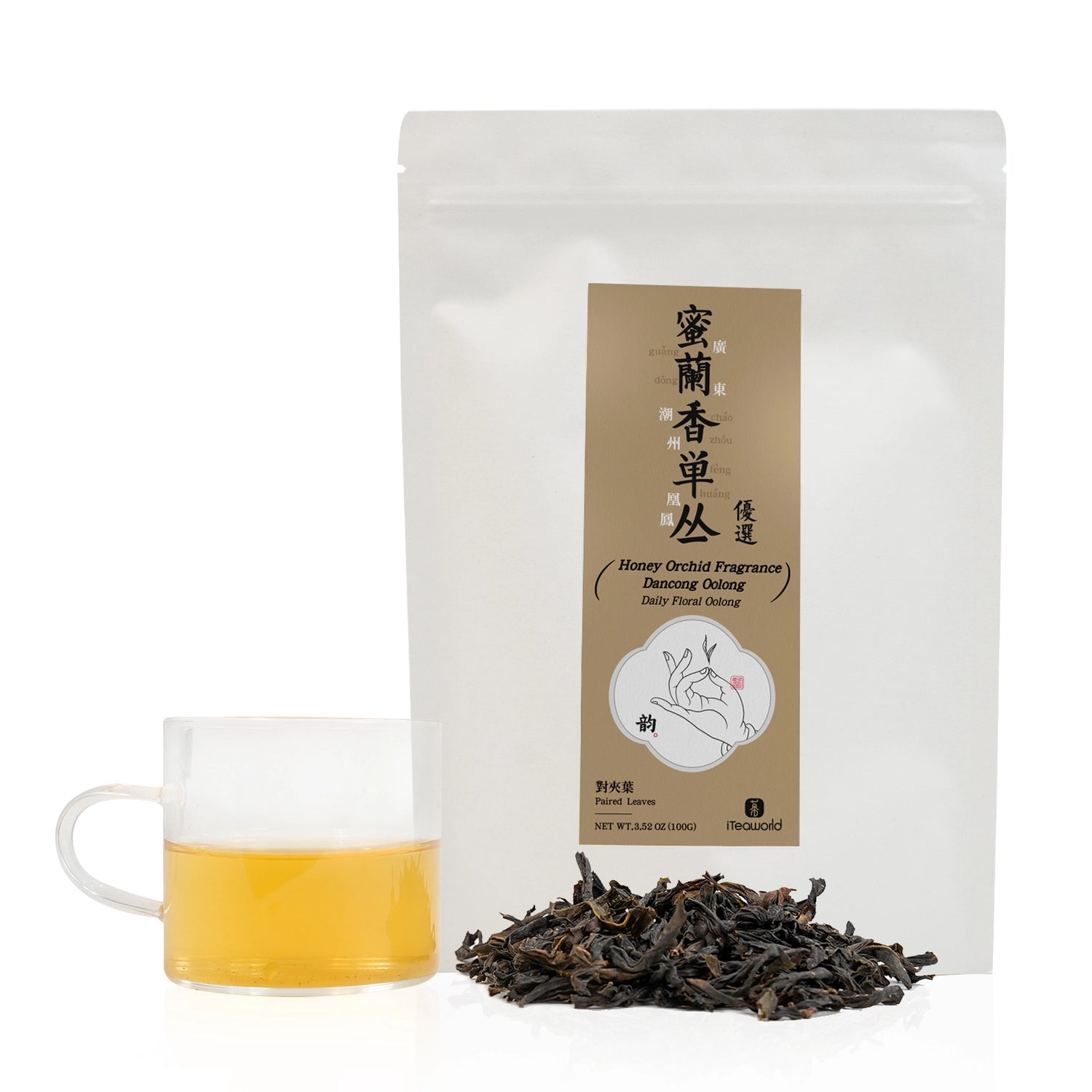
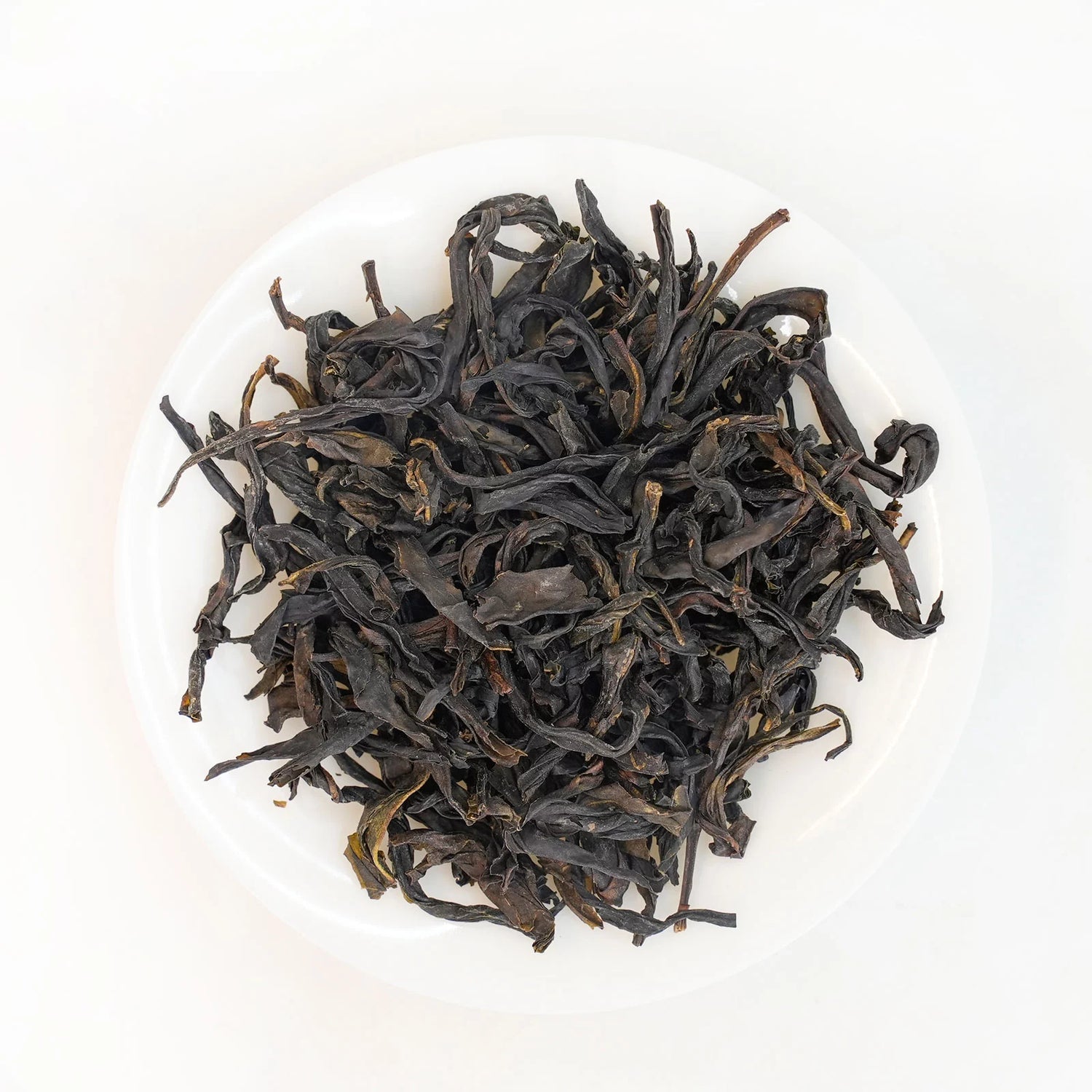
Mi Lan Xiang Dancong (Honey Orchid Aroma) oolong tea 100g for daily use (2025 spring)
$24.99 USD
Unit price perMi Lan Xiang Dancong (Honey Orchid Aroma) oolong tea 100g for daily use (2025 spring)
$24.99 USD
Unit price perFenghuang Dancong (Mi Lan Xiang)|凤凰单枞蜜兰香
Introduction
Mi Lan Xiang Dancong is one of the most celebrated Phoenix Dancong oolongs, known for its naturally rich honey-orchid aroma. The medium-twisted, dark dry leaves brew into a golden amber liquor, offering a full-bodied taste with layers of floral and fruity sweetness. Its nectar-like smoothness lingers across multiple infusions, with a refreshing aftertaste that deepens as you brew.
This tea comes from a village located in one of the premium zones for Zhongshan Dancong—an area recognized by locals as the gateway to the high-mountain growing region. Teas from this zone are considered top-grade among commercial Dancongs, offering exceptional quality for the price. The tea is crafted by a seasoned tea maker from a family with a long tradition of tea-making, with over 20 years of hands-on experience.
Origin: Fengxi Village, Fenghuang Town, Guangdong | 500m
Oxidation: 40-50% | Roast: Medium (100-120°C, 6-10h)
Tea Maker: Liu Chengpeng, a second-generation tea artisan with over 20 years of tea-making experience in a family that has crafted Dancong tea for generations.
Cultivar: Mi Lan Xiang Dancong
Harvest: April 2025 (Spring)
Elevation: 500-600m
Oxidation: Medium (40–50%)
Roast: Light (traditional charcoal finishing)
Shelf Life: 3 years
Storage: Store in an airtight container in a cool, dry, and odor-free place. For light-roasted Dancong, refrigeration is recommended to preserve its floral aroma.
Brewing
Vessel: Porcelain gaiwan / thin clay pot
Water: Spring/pure, 100ml : 5g tea, 100°C|212°F
Steeping: 1st-3rd: 8-12s; 4th-7th: +5-10s per steep
Flavor
Aroma: Orchid (main), honey, ripe fruit notes
Taste: Thick like honey | Smooth as nectar
Aftertaste: Lingering >1min, cooling floral finish
Occasions
Morning indulgence (energizing yet smooth)
Afternoon relaxation (floral aroma soothes the mind)
Cold brew (4°C, 2h; enhances fruity notes)
Baiya Qilan
Baiya Qilan is a rare oolong variety native to Pinghe County, Fujian. First discovered during the Qing Dynasty, it’s named for its pale buds and strong orchid fragrance. It’s one of Fujian’s top five oolongs, beloved for its unique blend of floral aroma and natural honeyed sweetness.
Our tea is harvested from the high-elevation gardens of Daqin Mountain (around 1000 meters), where misty skies and selenium-rich soil help develop its rich aroma. Each cup offers bright orchid and pomelo notes, with a soft texture and a refreshing, sweet finish.
This is a refined, elegant oolong that appeals to both floral tea lovers and those looking for something rare and naturally sweet.
-
Origin: Daqin Mountain, Qiling Township, Pinghe County, Zhangzhou, Fujian, China
-
Tea Maker: Cai Xiaohong
-
Harvest: Autumn 2024
-
Shelf Life: 36 months
-
Cultivar: Qilan
-
Elevation: 800–1000 meters
FAQs
Brewing oolong tea isn’t difficult at all—just follow a few key tips and you’ll enjoy a flavorful cup with ease:
Water Temperature: 85°C to 100°C (185°F to 212°F), depending on the tea type
Tea-to-Water Ratio: Use one mini tea cake (5g) or 1–2 teaspoons of loose leaf for every 200ml (7oz) of water
Steeping Time: Steep for about 30–60 seconds on the first brew. Increase time slightly for each additional infusion
Multiple Infusions: Oolong tea is known for being re-steepable—usually 3 to 5 times or more. Each infusion reveals new layers of aroma and taste.
Oolong tea contains a moderate amount of caffeine and is rich in polyphenols, which can help boost energy, support digestion, and promote overall wellness when consumed in the right amount.
✅ Recommended Times to Enjoy Oolong Tea:
After Breakfast (9:00–10:30 AM)
Gently wakes up your digestive system and boosts mental clarity.
- After Lunch (1:00–3:00 PM)
Helps with digestion and cuts through greasy meals—especially useful after heavy lunches. - Afternoon Tea Time (3:00–5:00 PM)
Relieves fatigue and refreshes your mind. This is one of the best times for daily tea drinking. - After Dinner (before 7:00 PM, in moderation)
You may enjoy a low-caffeine or roasted oolong (like Da Hong Pao) to aid digestion, but avoid drinking too late to prevent sleep disruption.
❌ Times to Avoid:
On an empty stomach: Oolong tea has warming properties and may increase stomach acid when consumed without food.
Within 2 hours before bed: Its caffeine content may interfere with your sleep quality.
☕ How Much Per Day?
For most people, 2 to 4 cups per day (about 10–20g of dry tea) is a healthy and enjoyable range. Since oolong tea can be steeped multiple times, you can spread out your tea sessions throughout the day.
Oolong tea is a semi-oxidized tea, positioned between green and black tea in terms of processing and flavor. This means it combines the freshness of green tea with the richness of black tea—a truly unique balance.
Green Tea is unoxidized, retaining its grassy, vegetal notes and a light, refreshing taste. It's perfect for those who enjoy a clean and delicate flavor.
Black Tea is fully oxidized, offering bold, smooth flavors with notes of honey, malt, or fruit. It’s warming and full-bodied.
Oolong Tea is partially oxidized (typically between 10% and 70%). Its flavor varies widely:
Lightly oxidized oolongs (like Tie Guan Yin) are floral and crisp.
Medium to heavily oxidized oolongs (like Da Hong Pao) are rich, roasted, and warming.
Some, like Oriental Beauty, have a sweet, honeyed aroma.
Another key difference: oolong tea is more resilient to multiple infusions than green tea. You can steep the same leaves 3–5 times or more, with each infusion gradually unfolding new layers of aroma and flavor. It’s ideal for slow sipping and mindful tea sessions.
Core Concept: Start small, focus on practice, enjoy the process.
Step 1: Get basic knowledge and beginner tea samples
Learn the basic concepts and categories of oolong tea. Buy some beginner-level tea samples to taste.
Step 2: Learn how to brew
Learn the brewing methods of oolong tea. You don’t need many tools—just start with mastering the tea-to-water ratio and steeping time.
Step 3: Taste carefully
Pay attention to the experience of each tea session—the color of the liquor, the leaves, the taste, and the aroma. This is key to understanding each type of oolong tea.
Step 4: Deepen learning and practice
Comparative tasting: Try different grades of the same type of tea or teas from different mountains.
Expand exploration: Try more oolong varieties.
Use resources:
High-quality blogs/websites: The tea brand’s official website blog, such as iTeaworld’s oolong tea blog.
Online/Offline Communities:
Reddit: The r/tea community is very active—you can ask questions, share, and read others’ tasting notes.
Local tea events/workshops.
The charm of oolong tea lies in its rich layers of aroma and ever-changing taste. For example:
Some are fresh and elegant, like Tie Guan Yin
Some are sweet and smooth like honey, like Oriental Beauty
Some are rich and mellow with a lingering aftertaste, like Da Hong Pao
What makes oolong tea special is that “the more you steep, the more flavor it reveals.” It is highly re-steepable, and each infusion shows a different character—like having a conversation with tea.
The first brew is fragrant and pleasant
The second brew is sweet and refreshing
From the third brew on, the aroma becomes softer, and the taste grows deeper
You can’t help but steep again and again, falling deeper in love with it.
Each kind of oolong tea is like a “flavor story,” combining the expression of nature with the craftsmanship of the tea master and the terroir of the mountain. The process of drinking tea is also a journey of exploration and enjoyment.
No worries! We offer a 30-day satisfaction guarantee. If the tea isn’t to your liking, you can get a refund—no returns needed. Just contact our customer service anytime. It’s a zero-risk way to explore and find the flavors you truly enjoy.
Absolutely—your safety is our top priority.
✅ Meets U.S. FDA requirements
All our teas pass mandatory radiation tests required by the FDA. Without this, they wouldn’t even clear customs.
✅ EU-level pesticide testing
Our teas have passed testing for over 500 pesticide residues. Ingredients in our Wild & Old Tree Tea Series meet EU export standards (certification in progress).
✅ From high-mountain, low-intervention gardens
We source teas from high-altitude farms with minimal human intervention, using seed-propagated heirloom varieties. These tea trees grow naturally—far from the heavy pesticide and fertilizer use found in industrial plantations.
✅ Full traceability and transparency
We share detailed origin info for each tea, down to the township, plus tea maker, harvest date, tree variety, elevation, soil type, and more. For green tea, you'll also see the leaf grade.
Can’t find what you’re looking for? Just ask our customer service—we’re happy to help.





